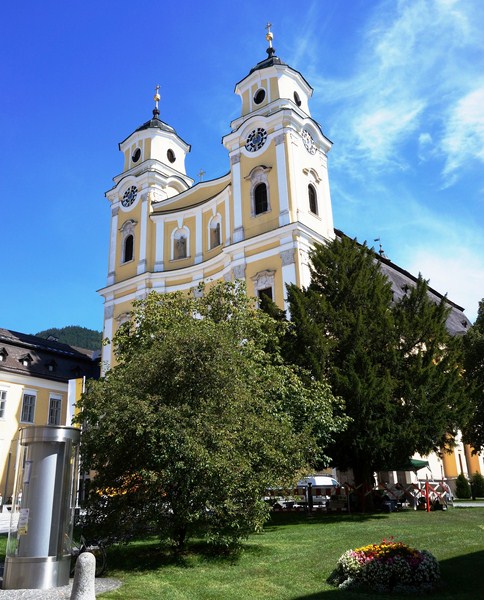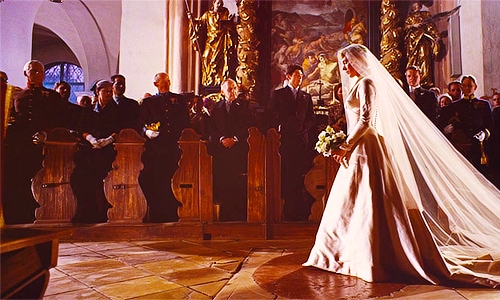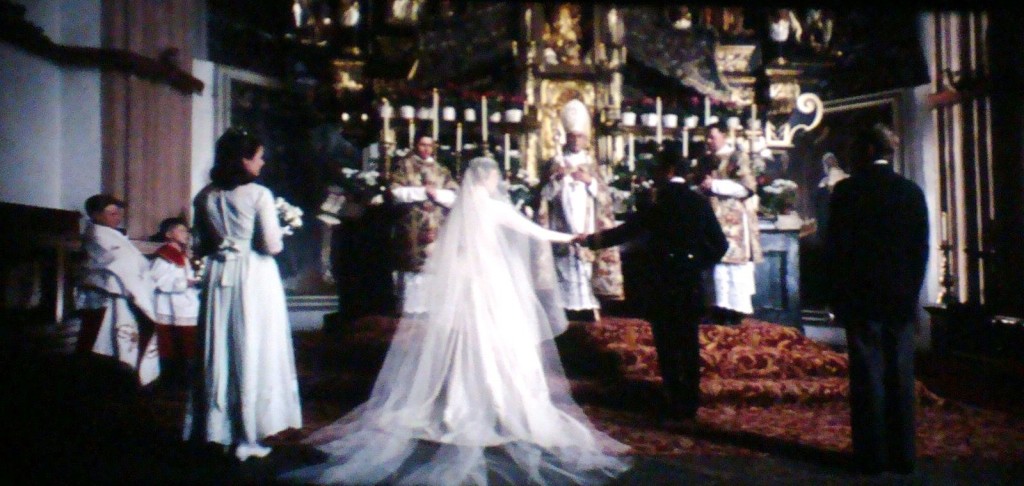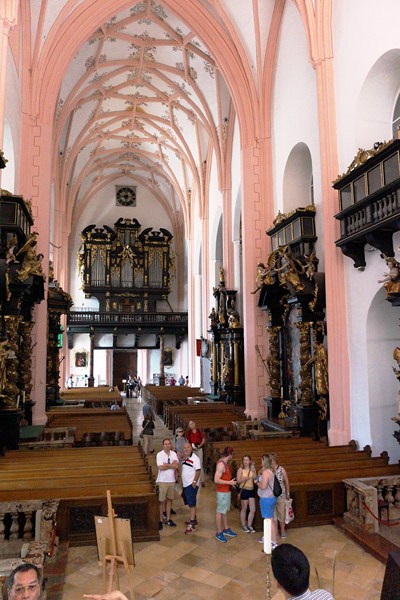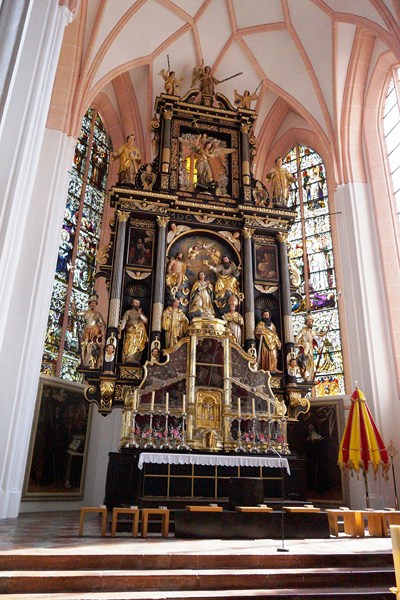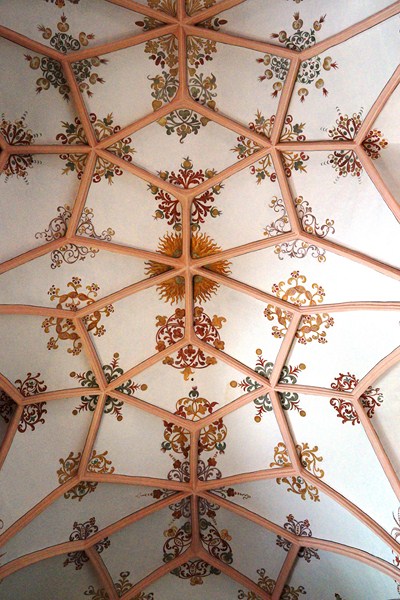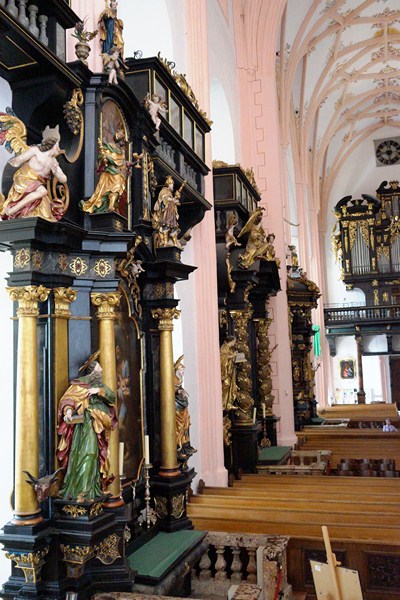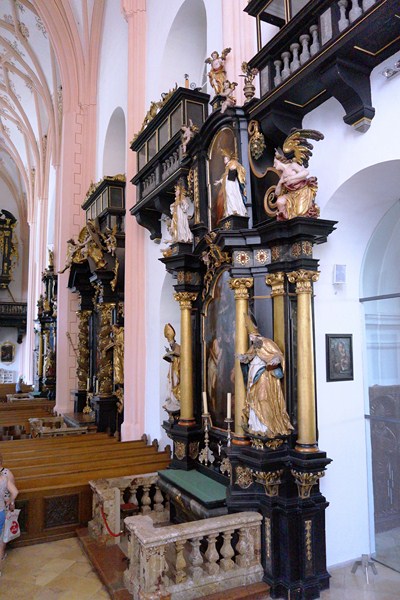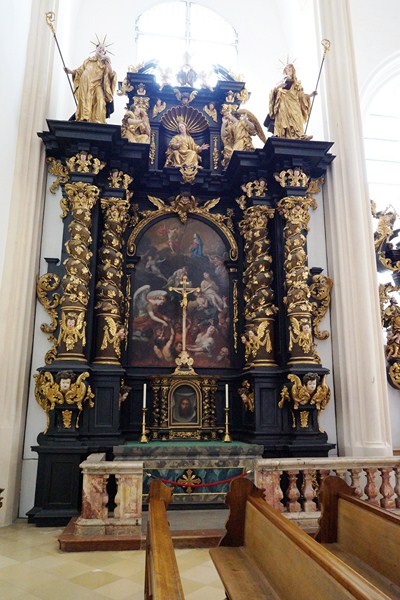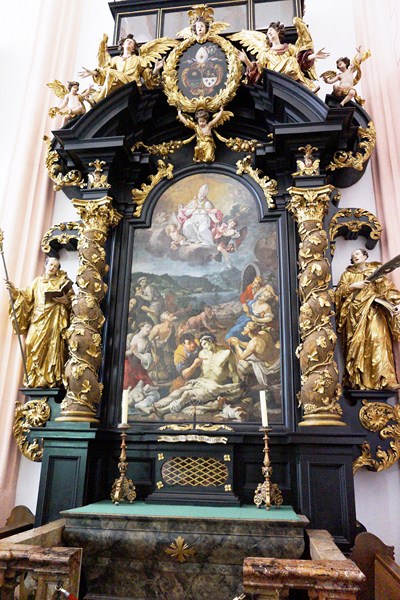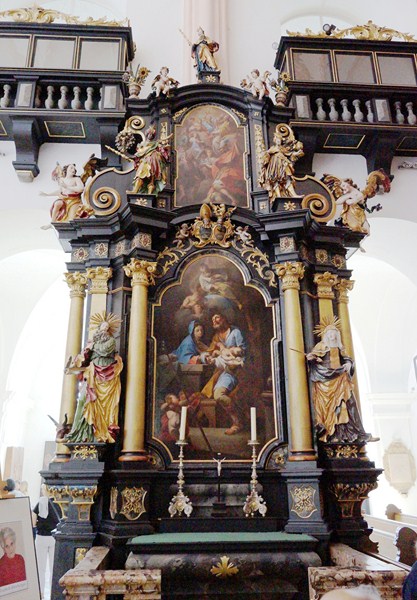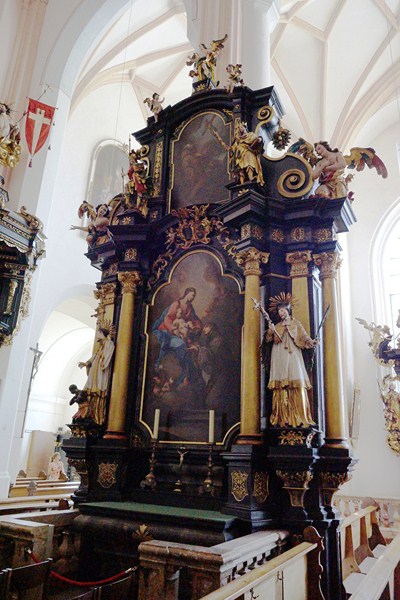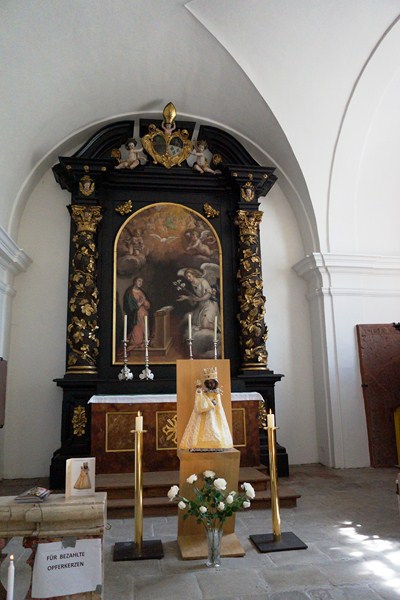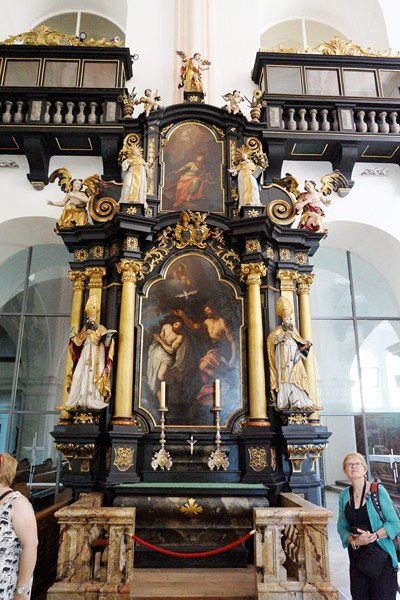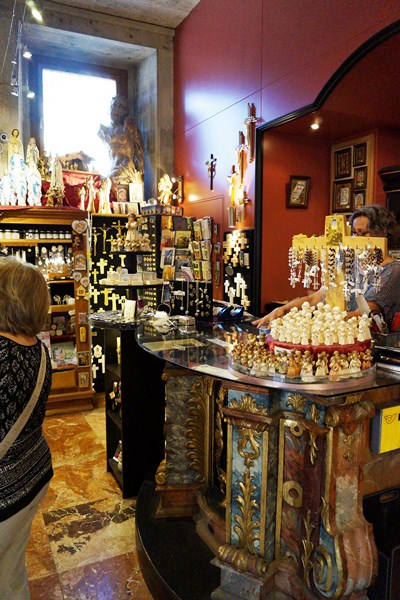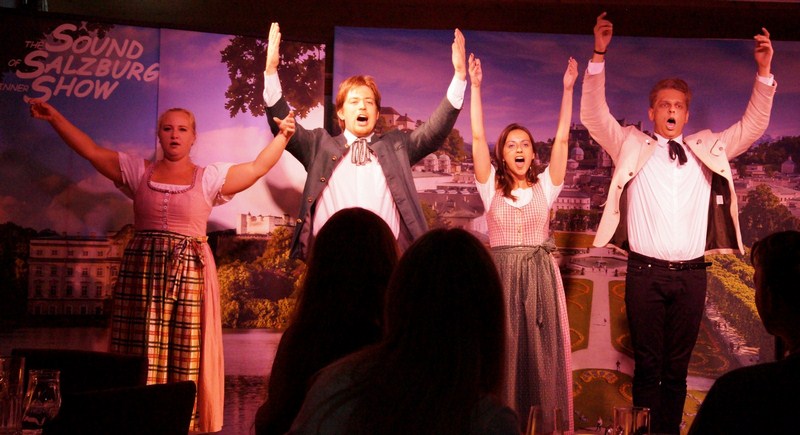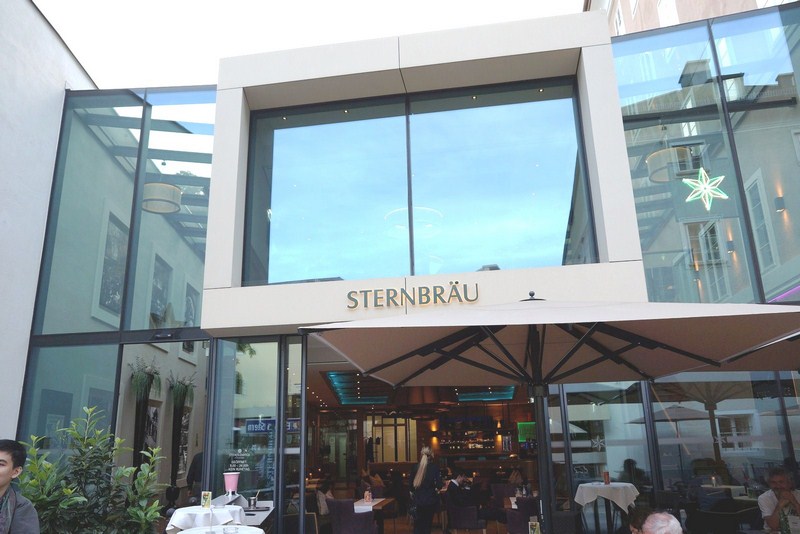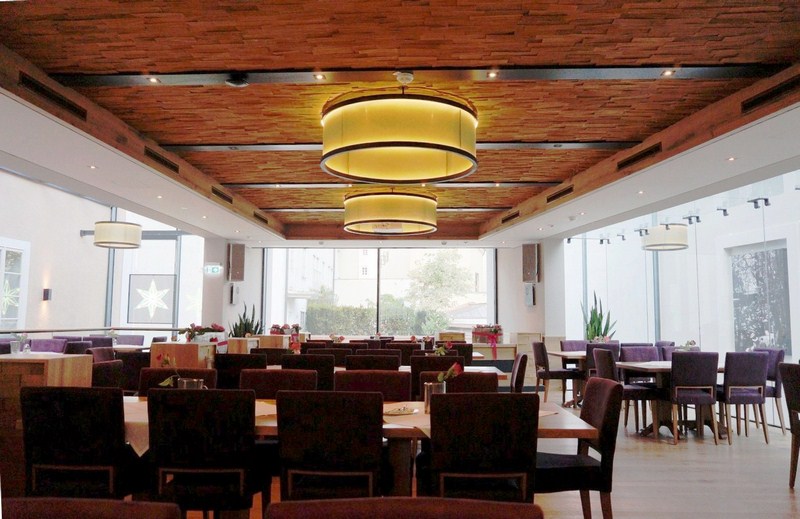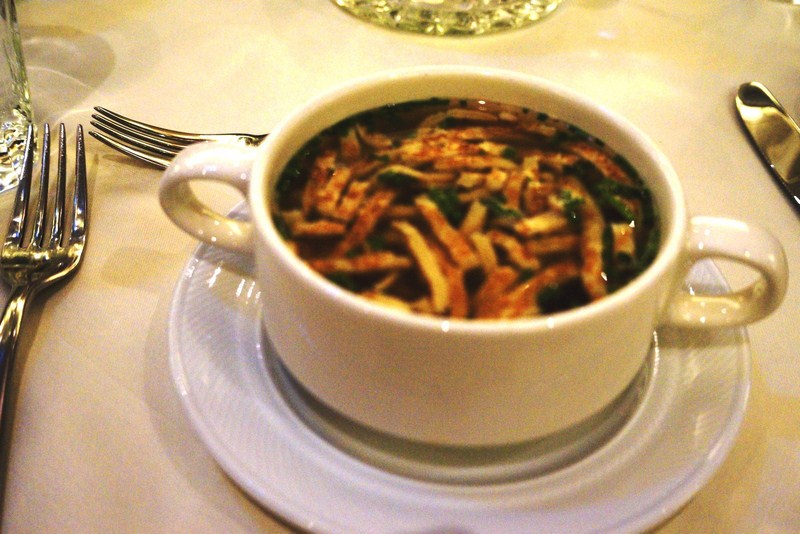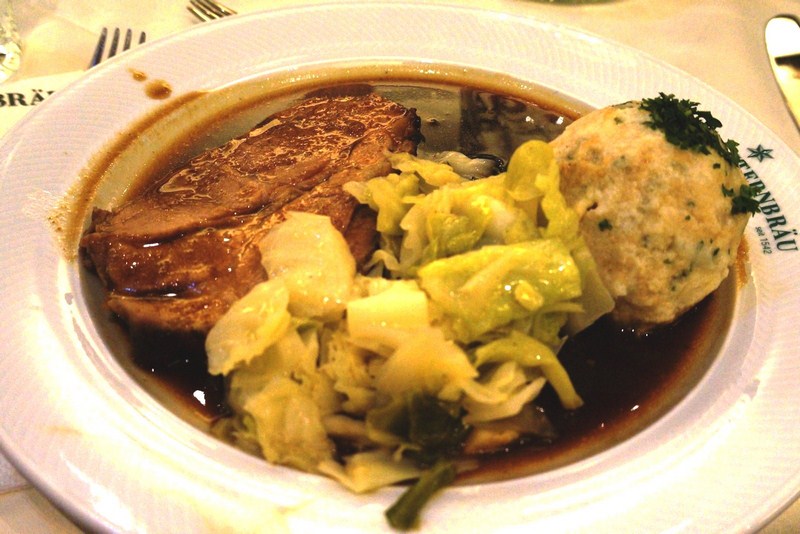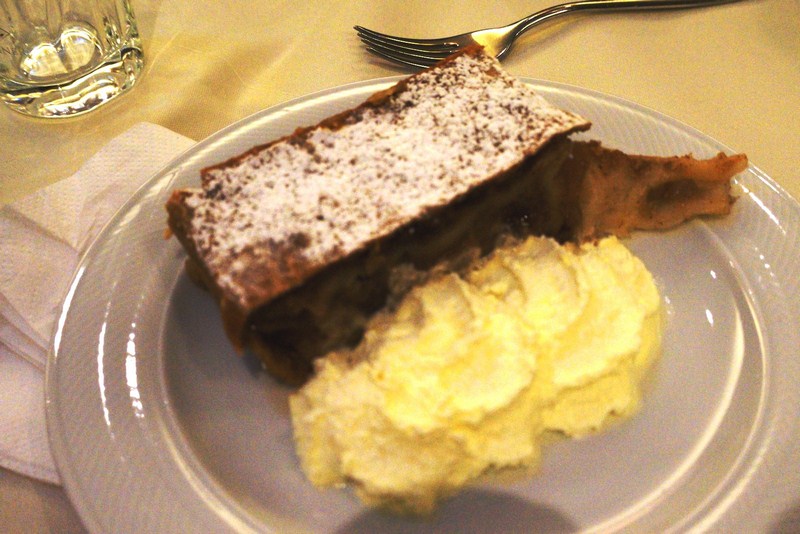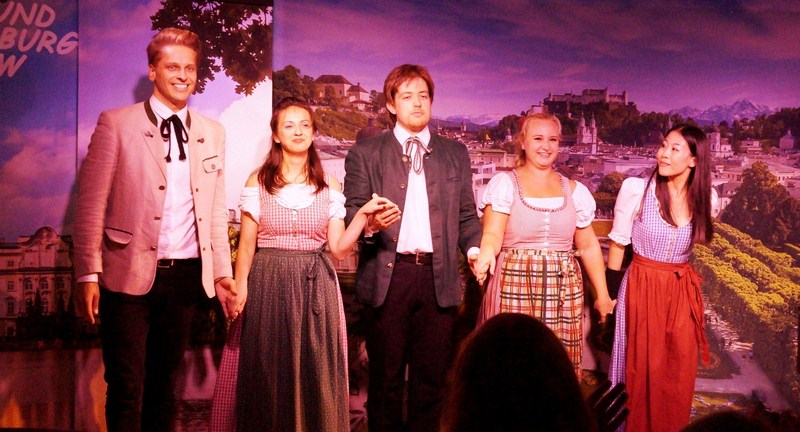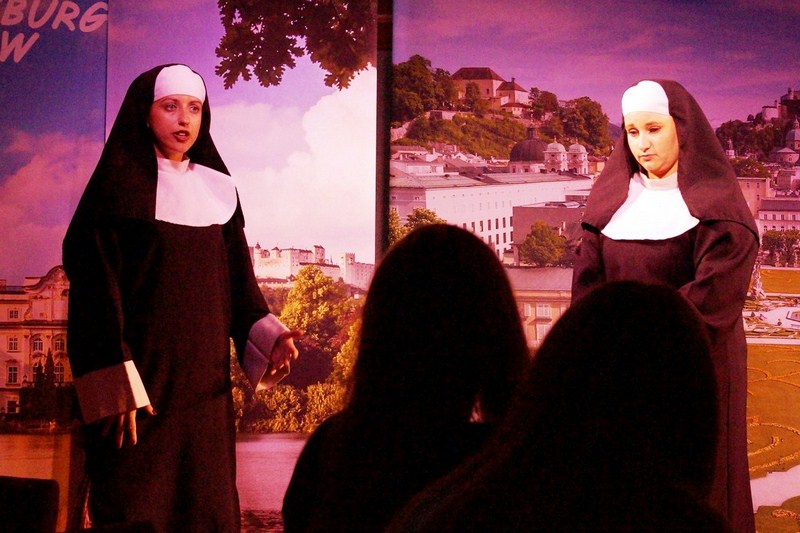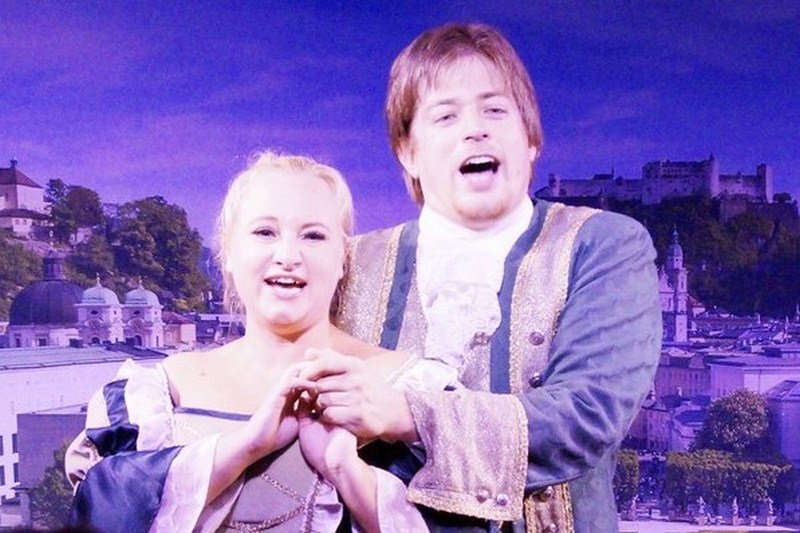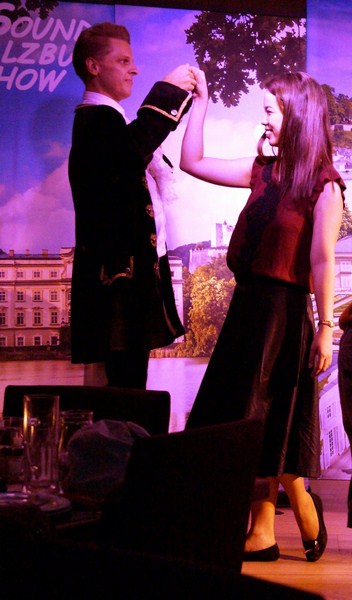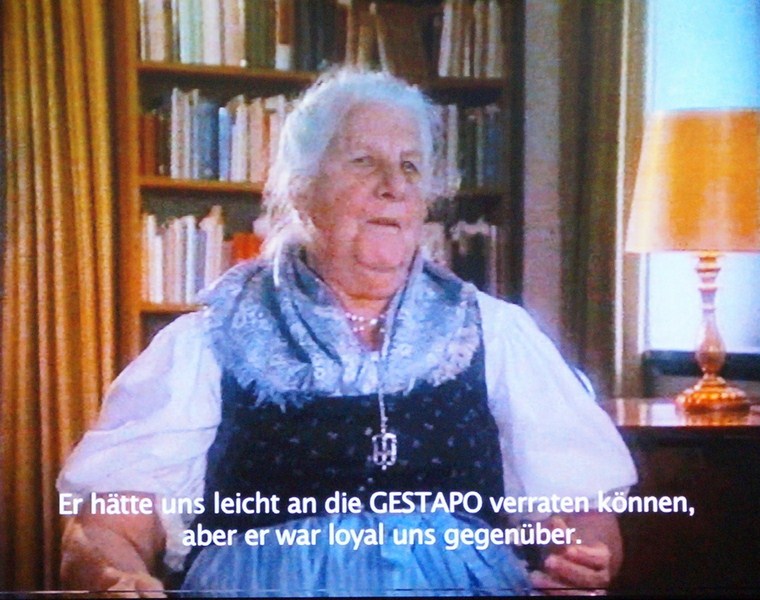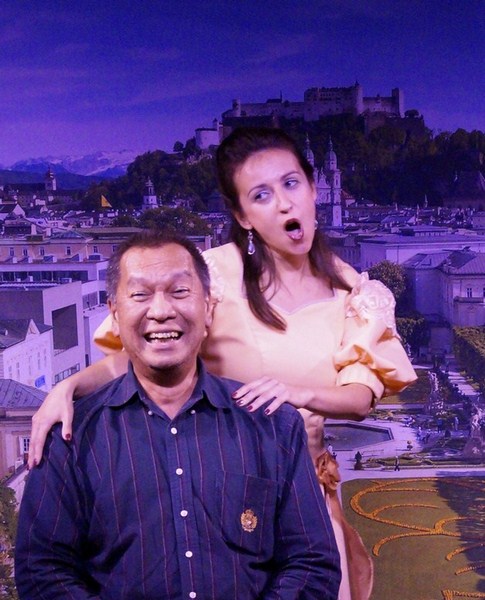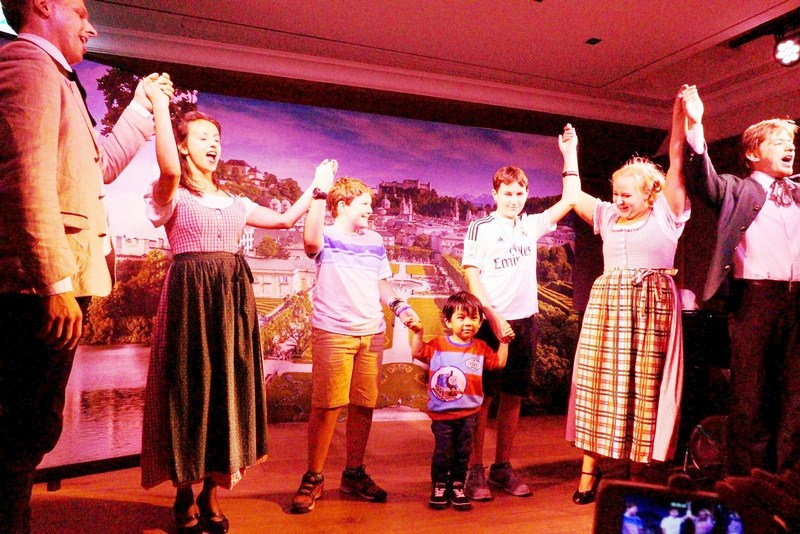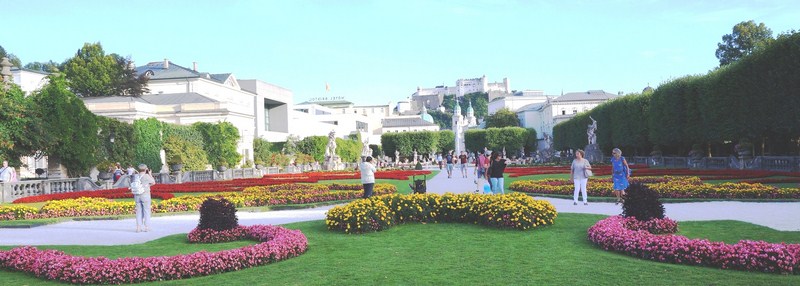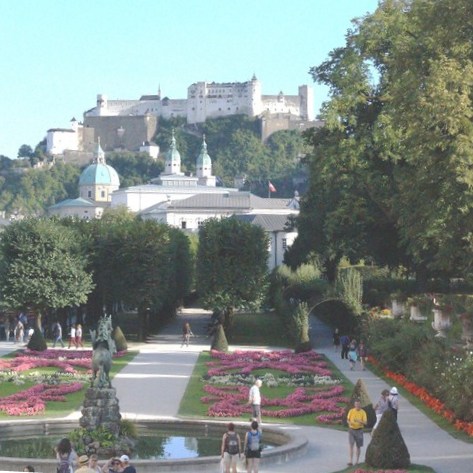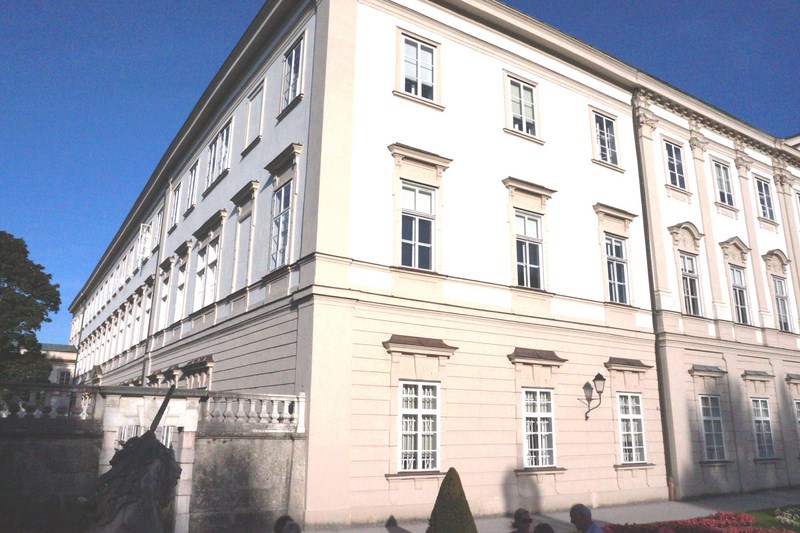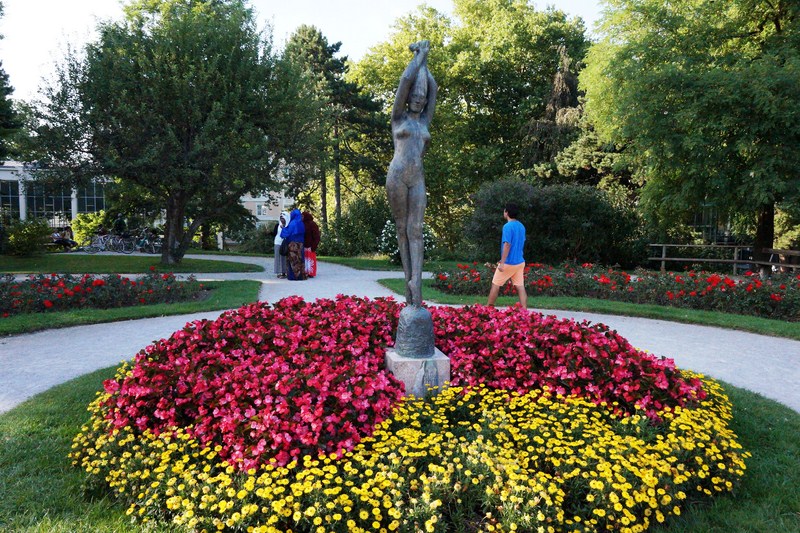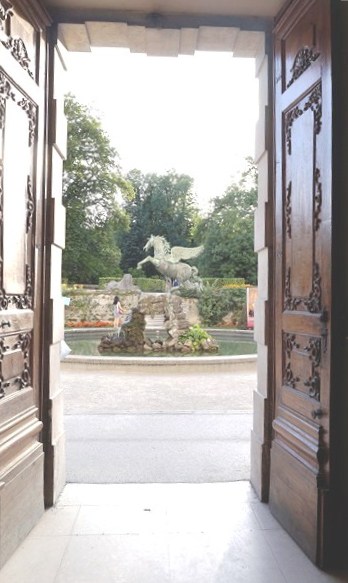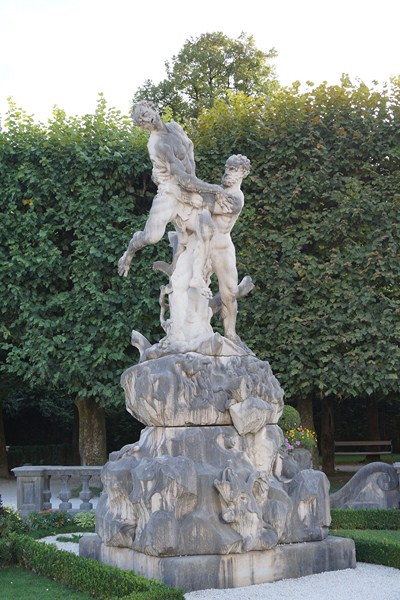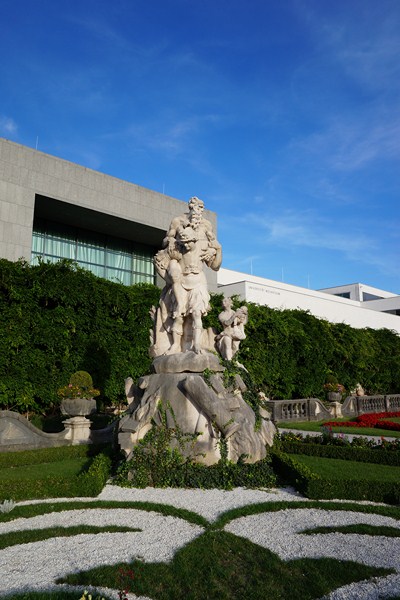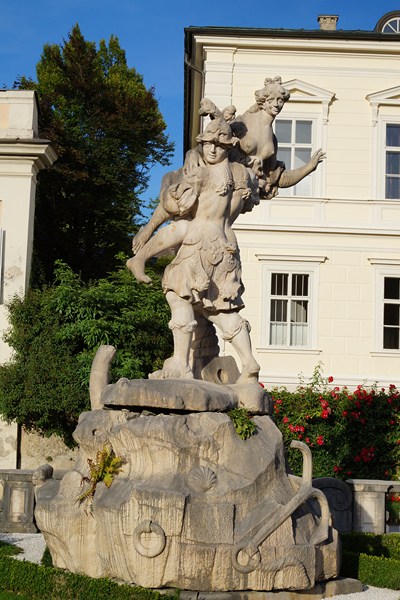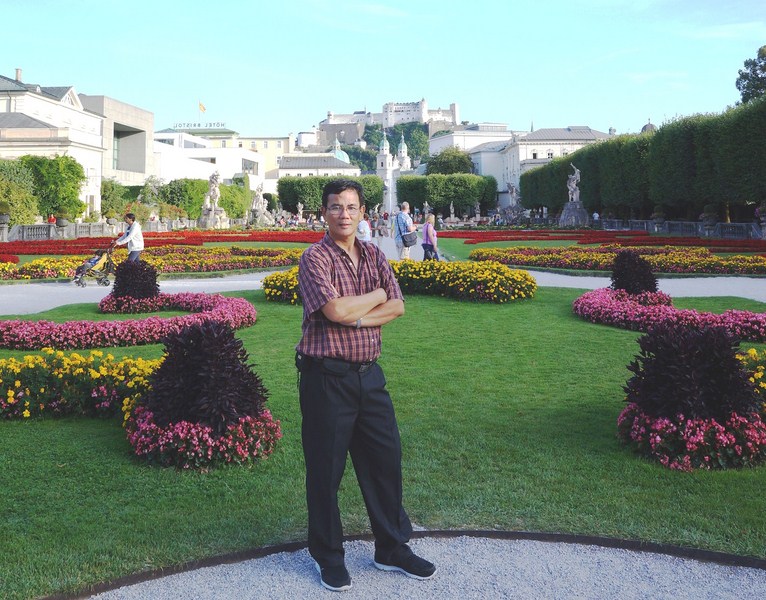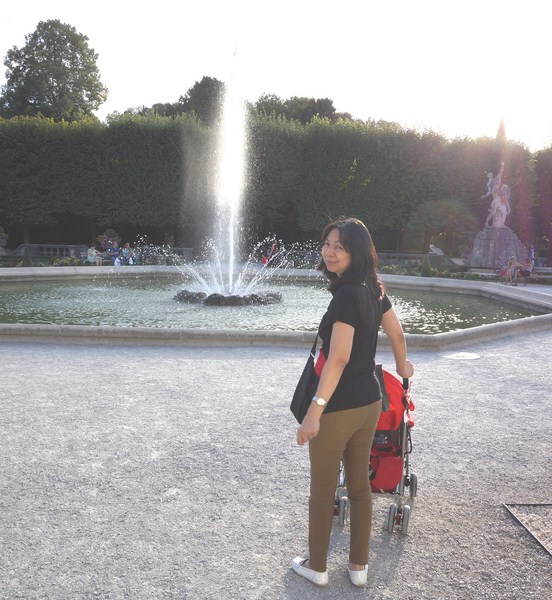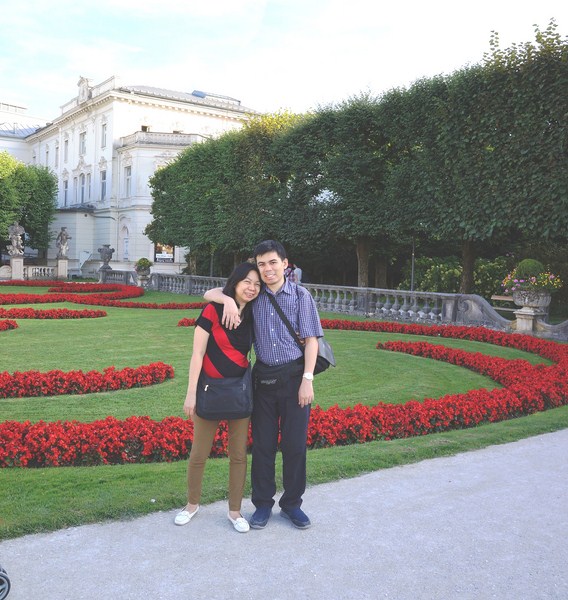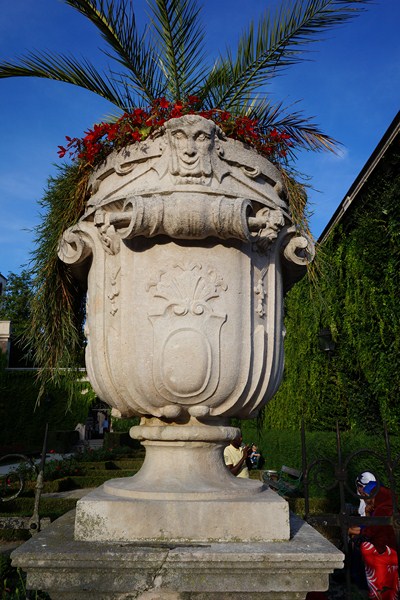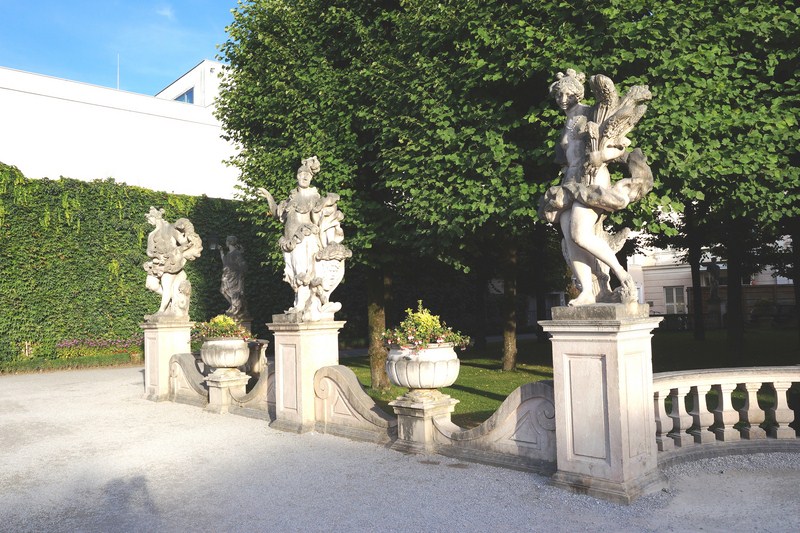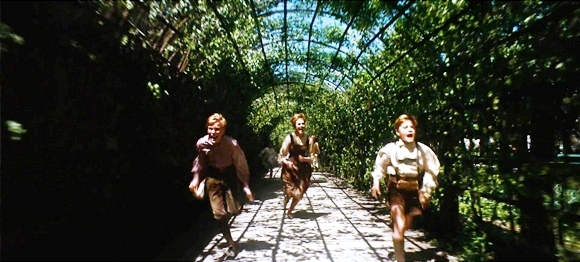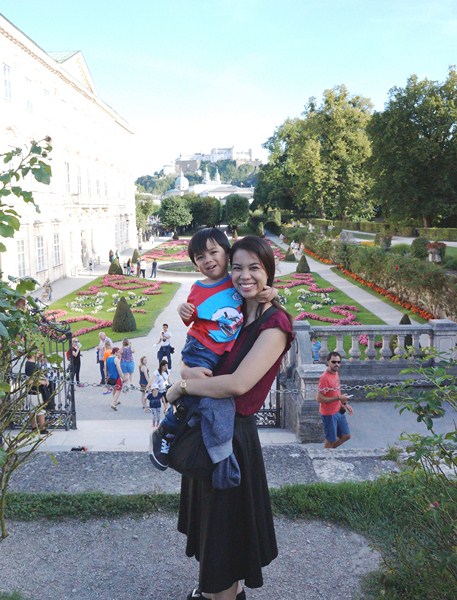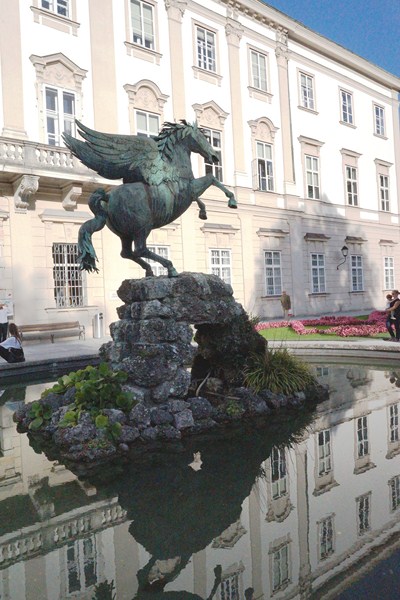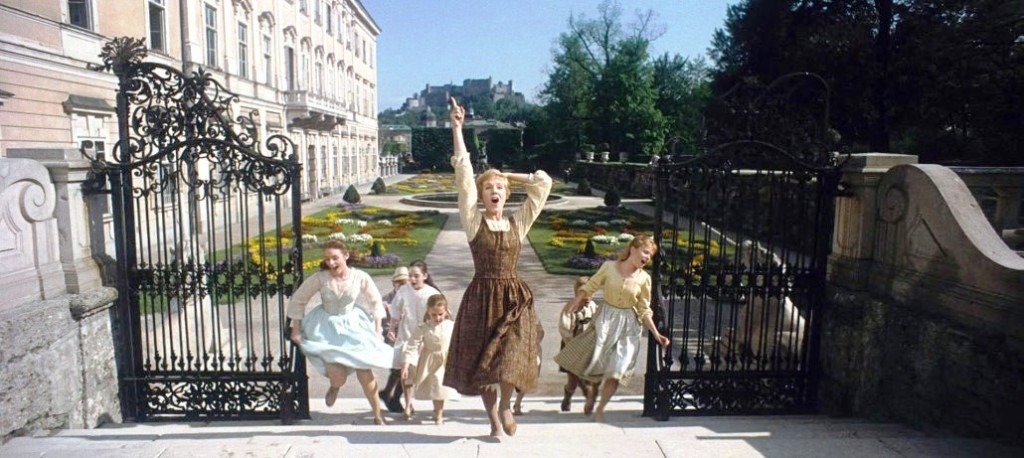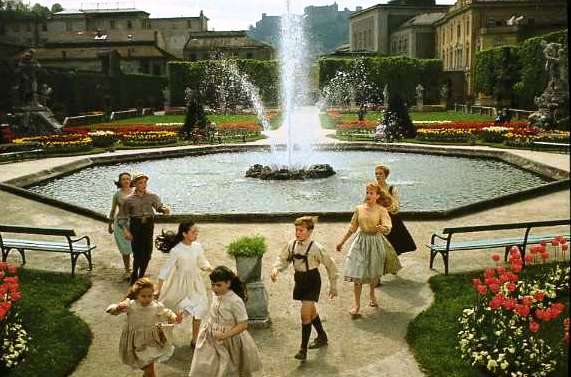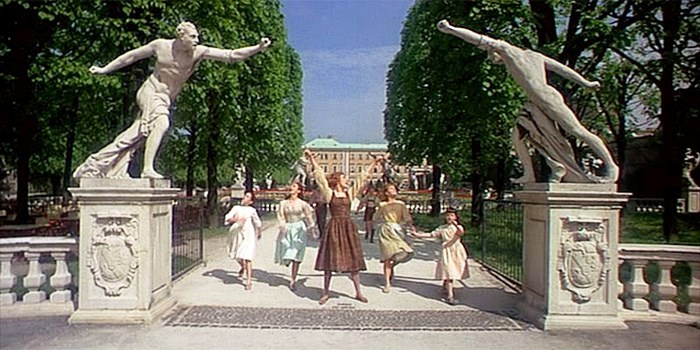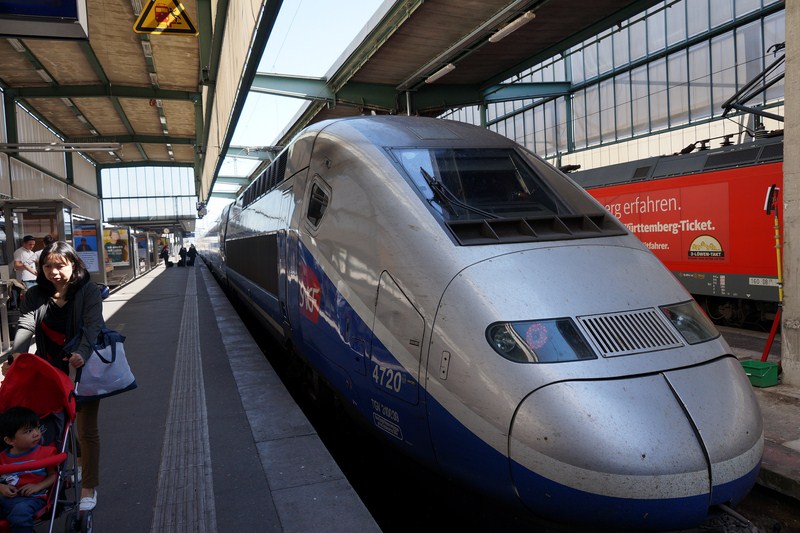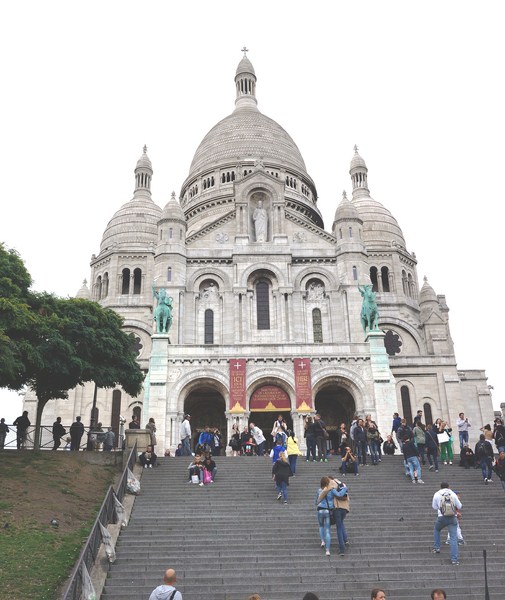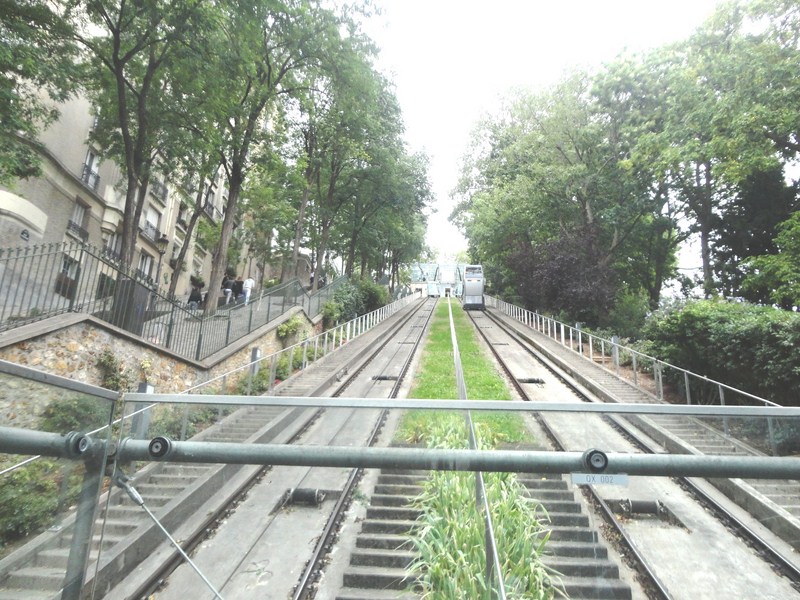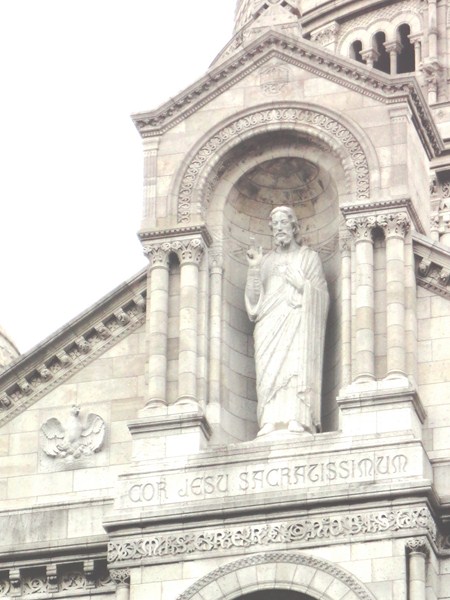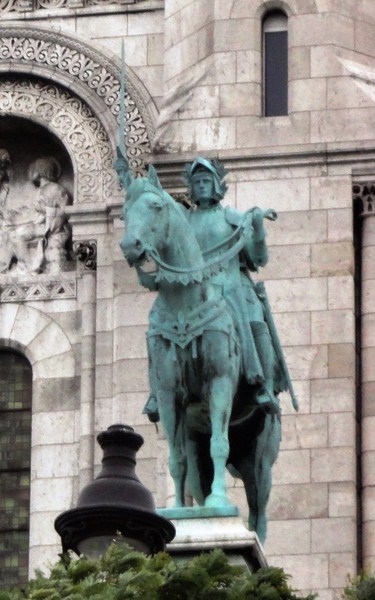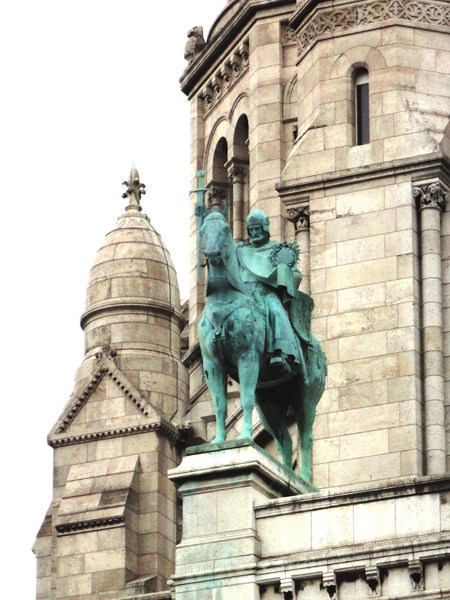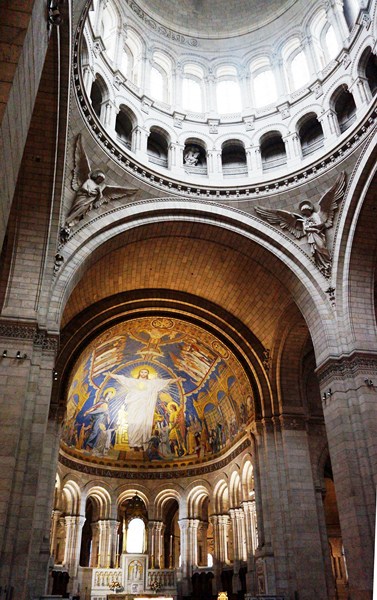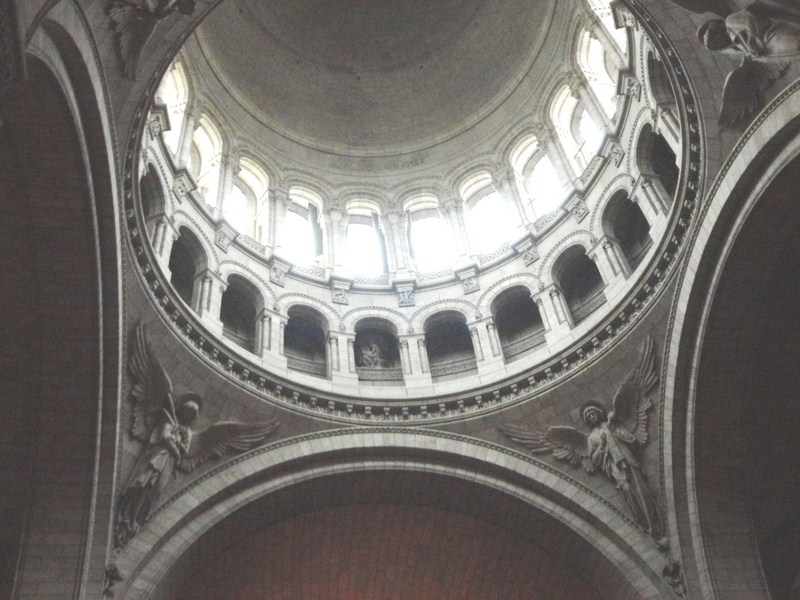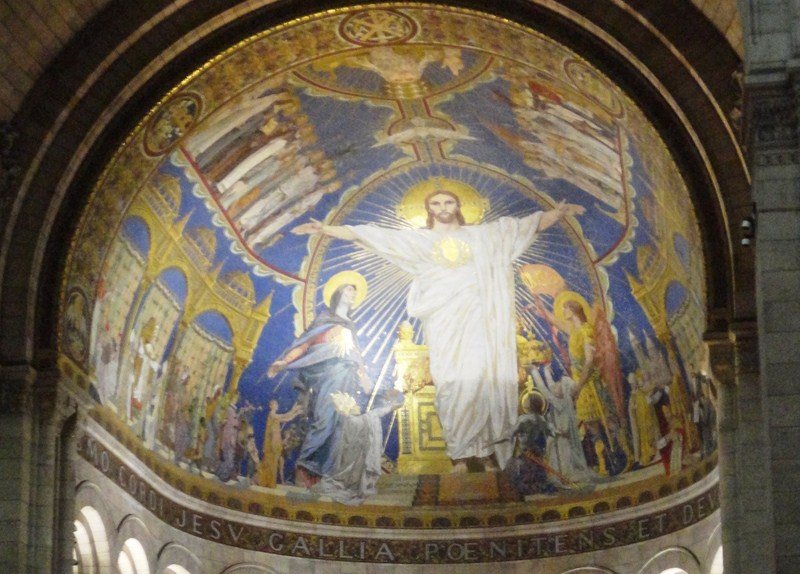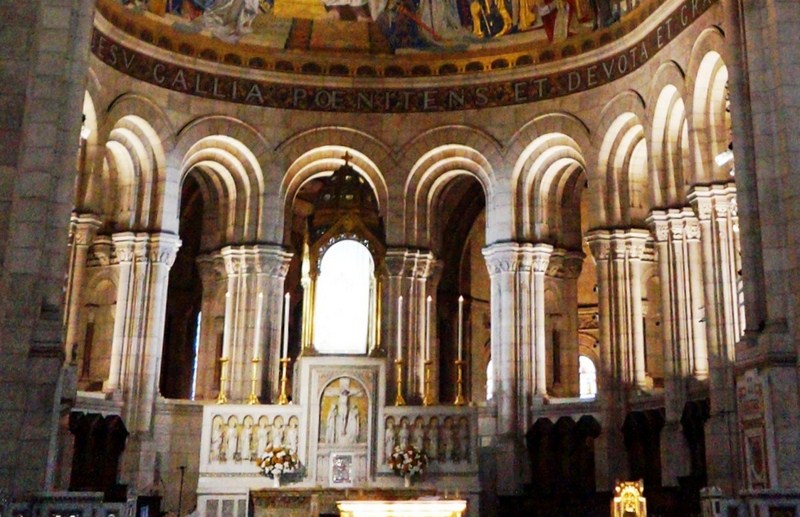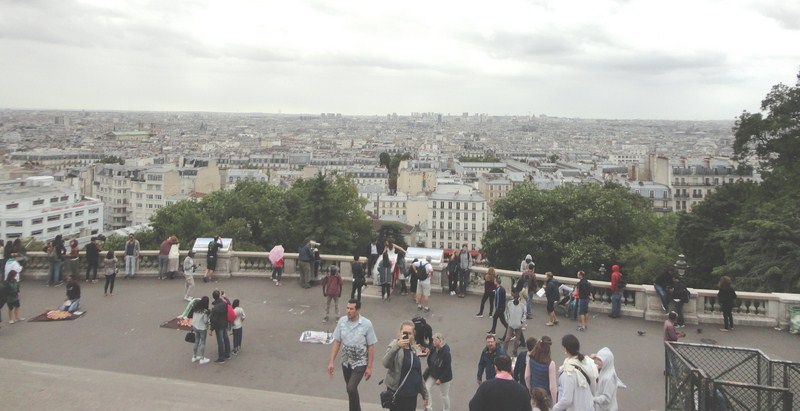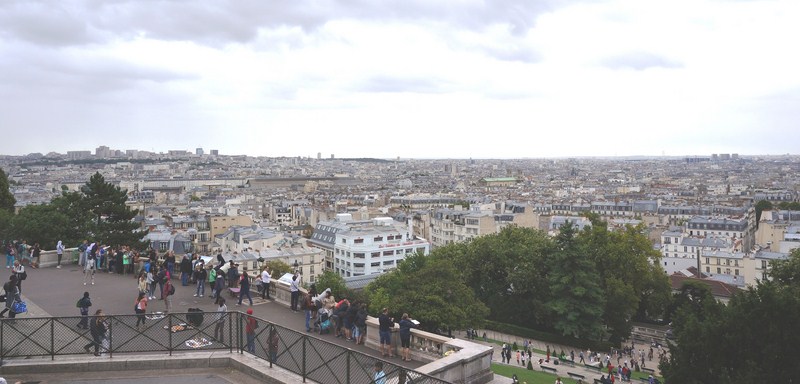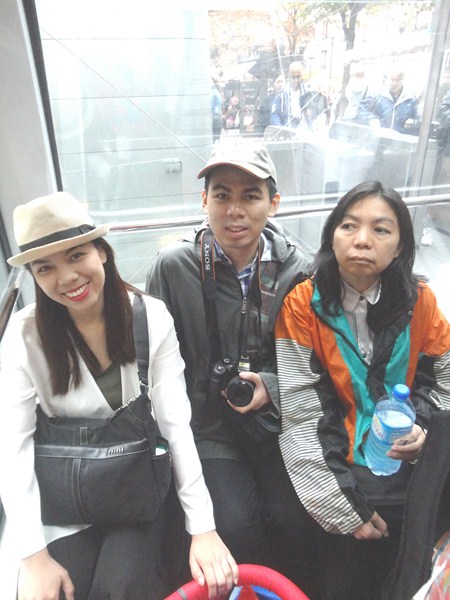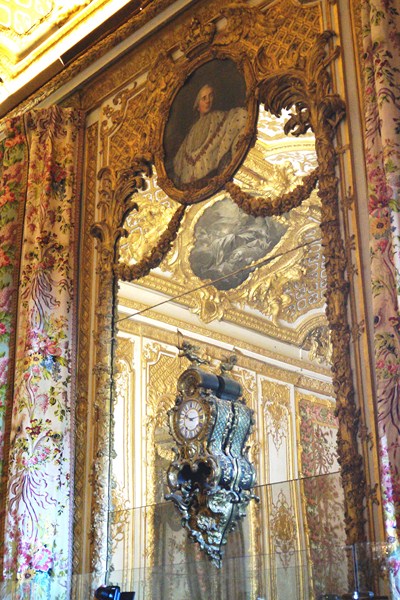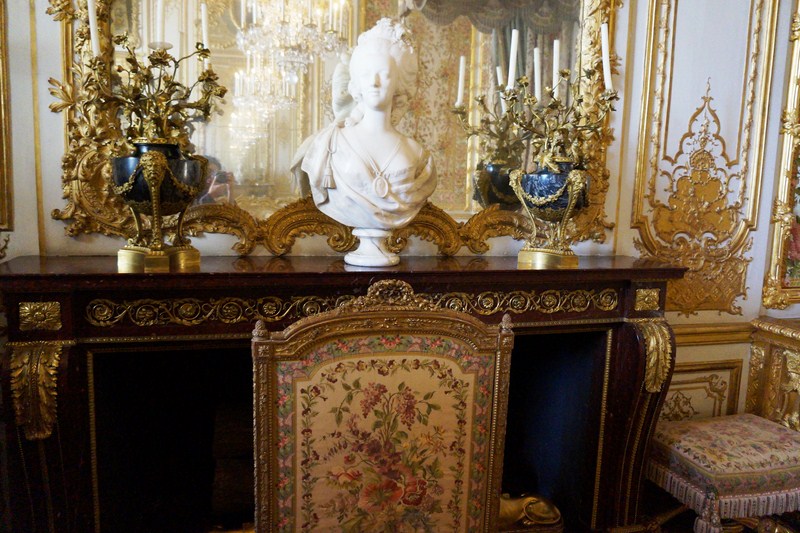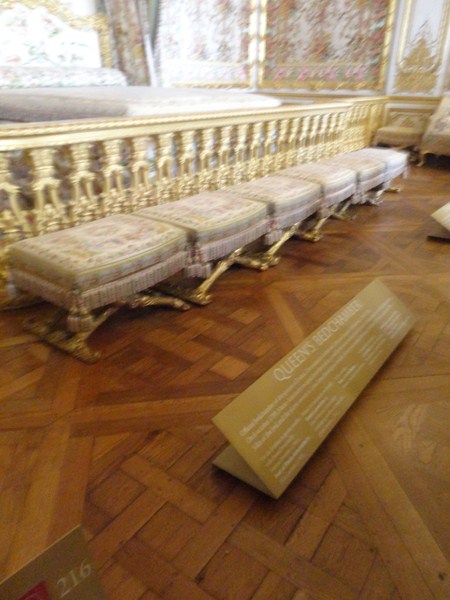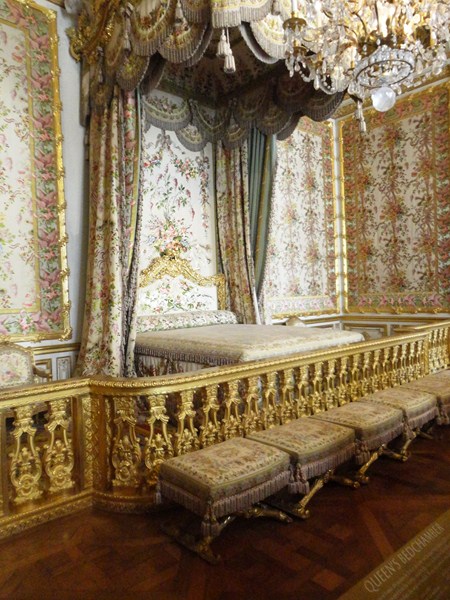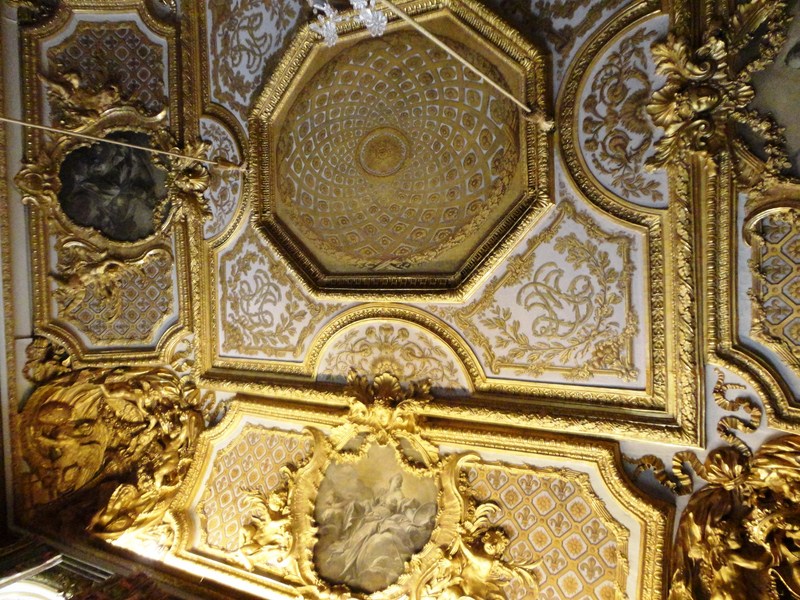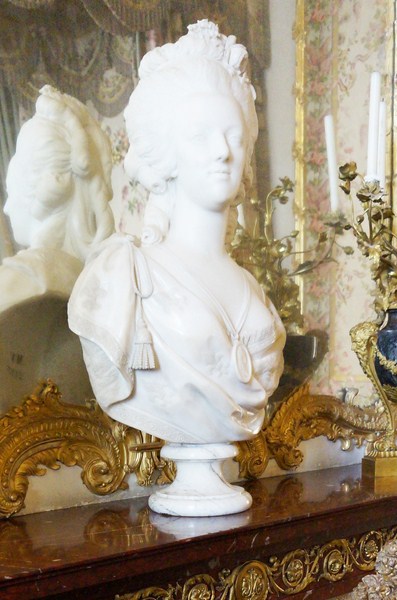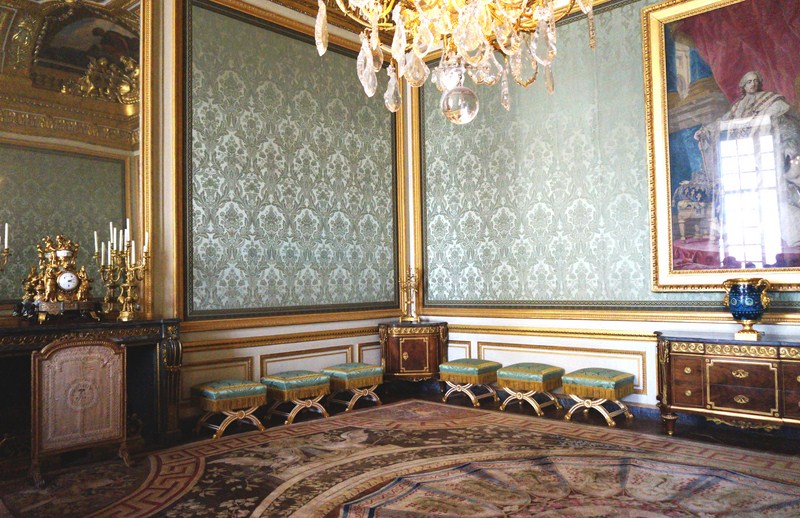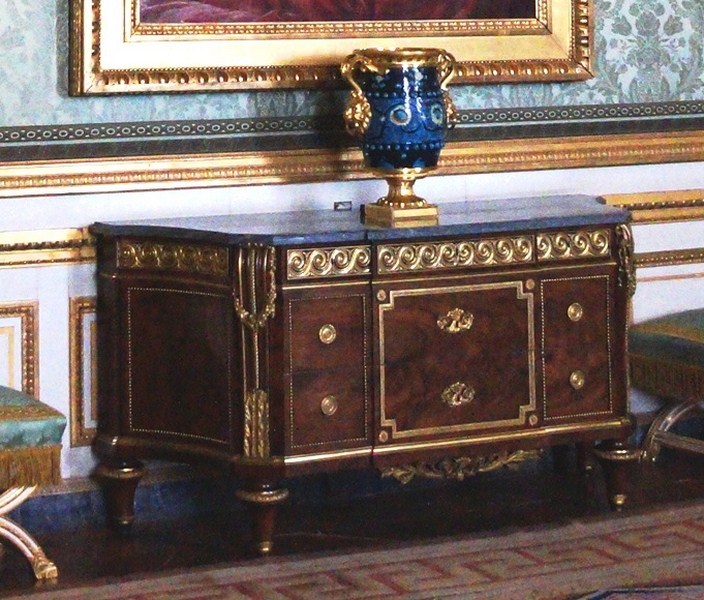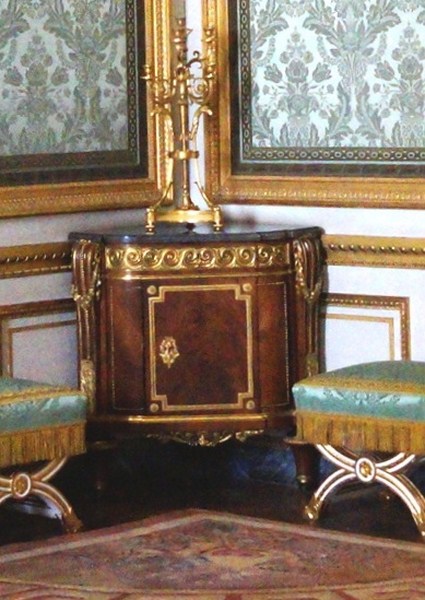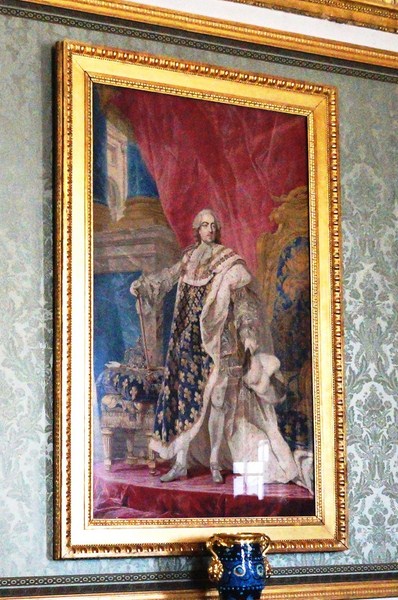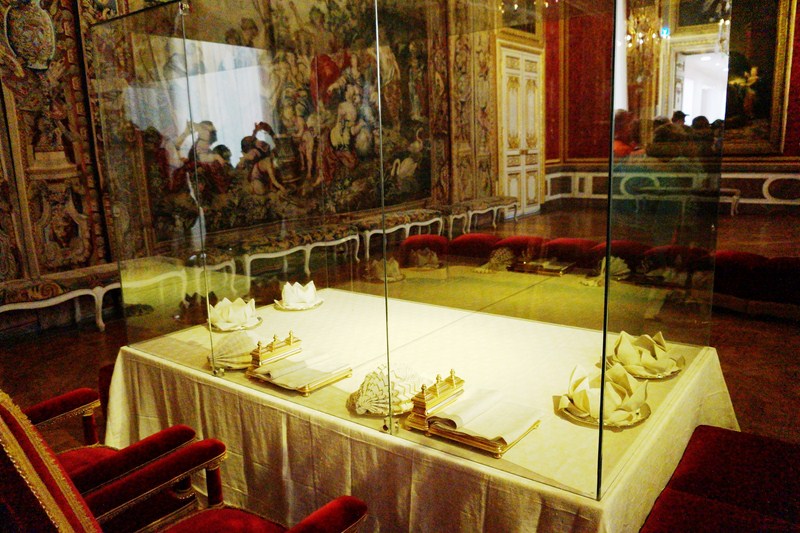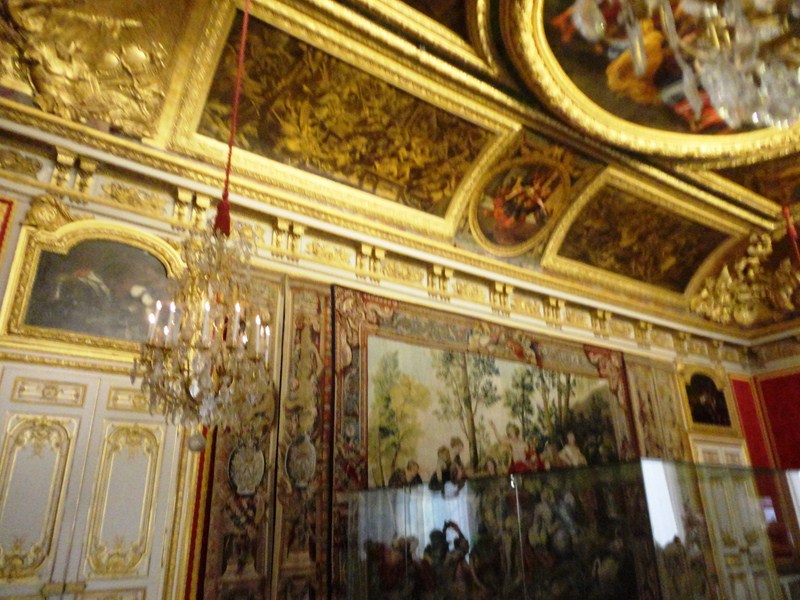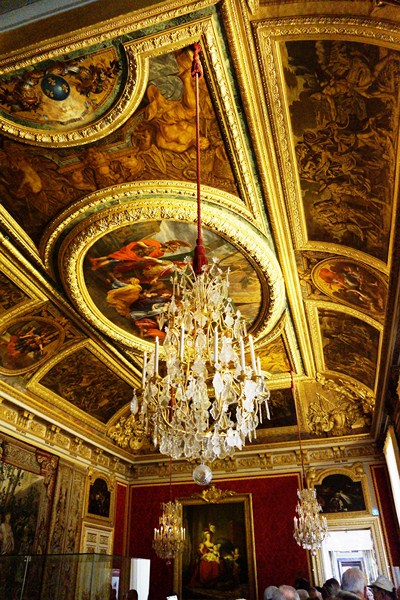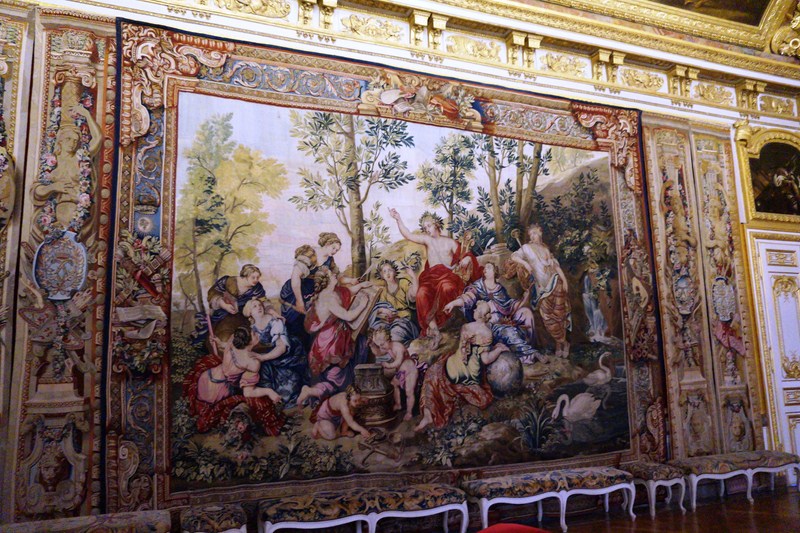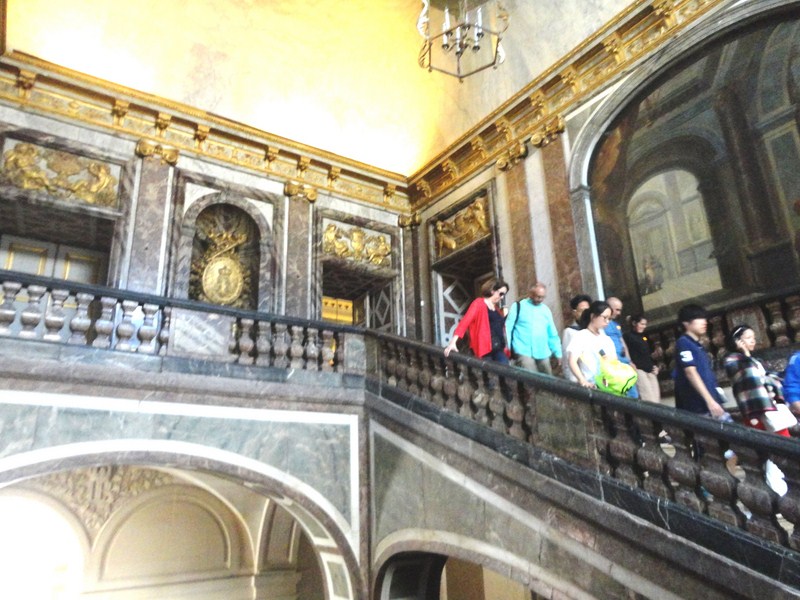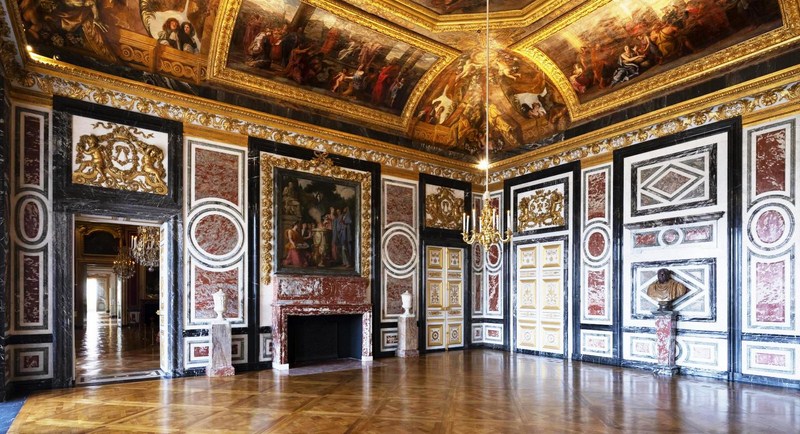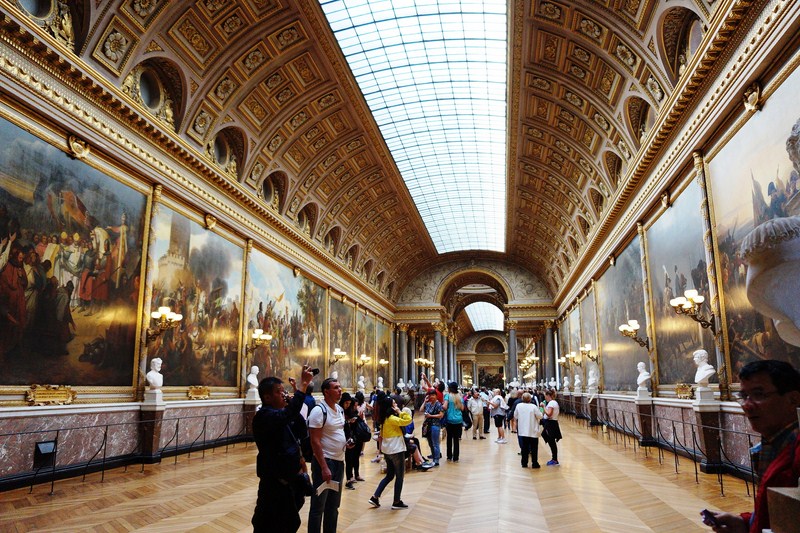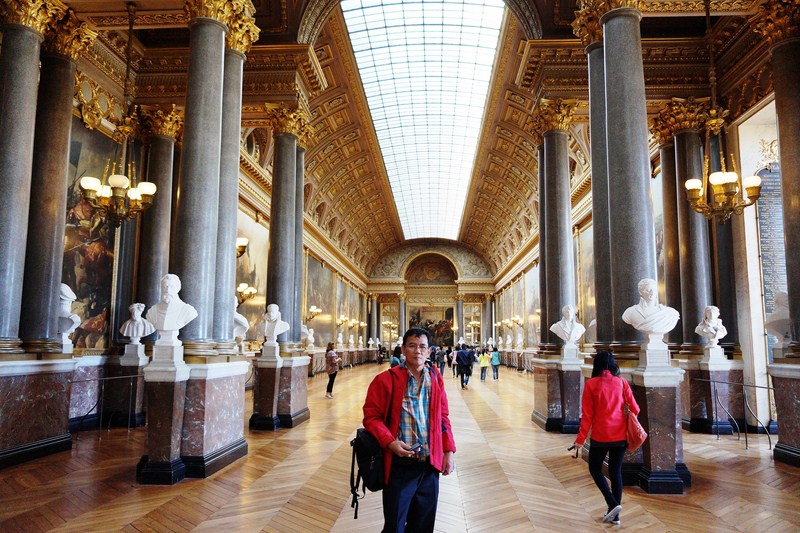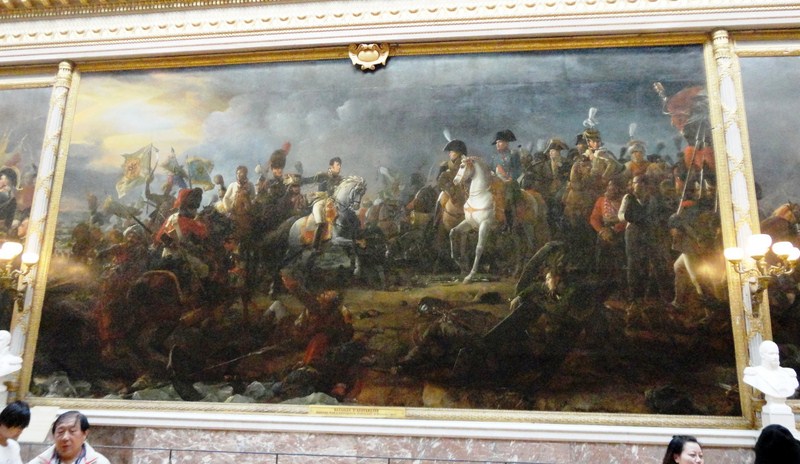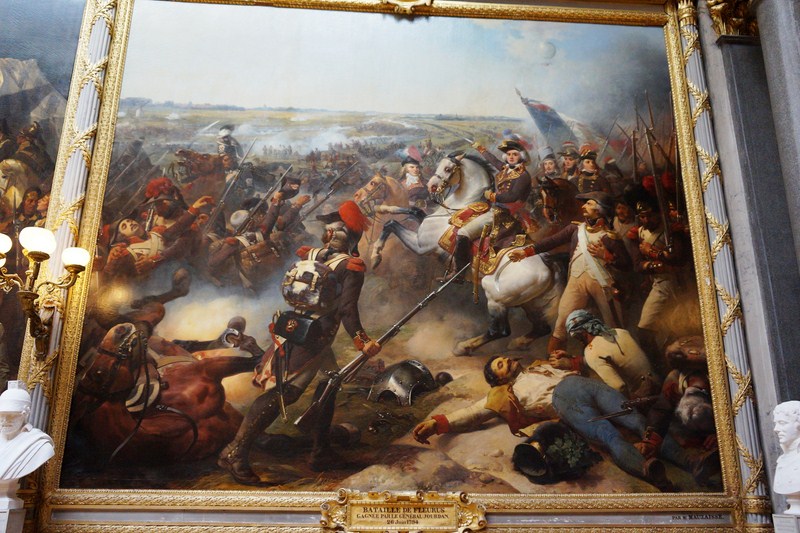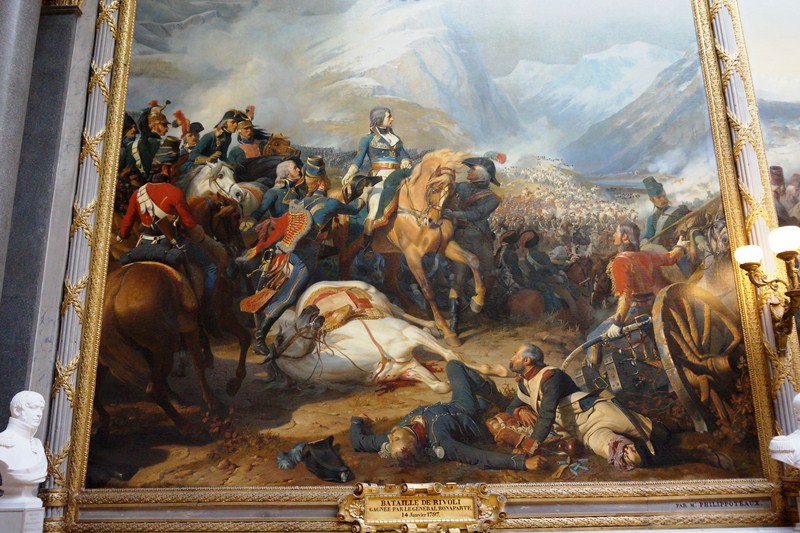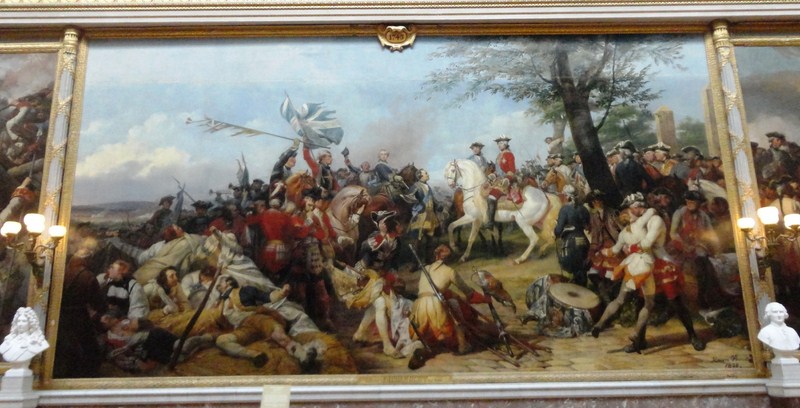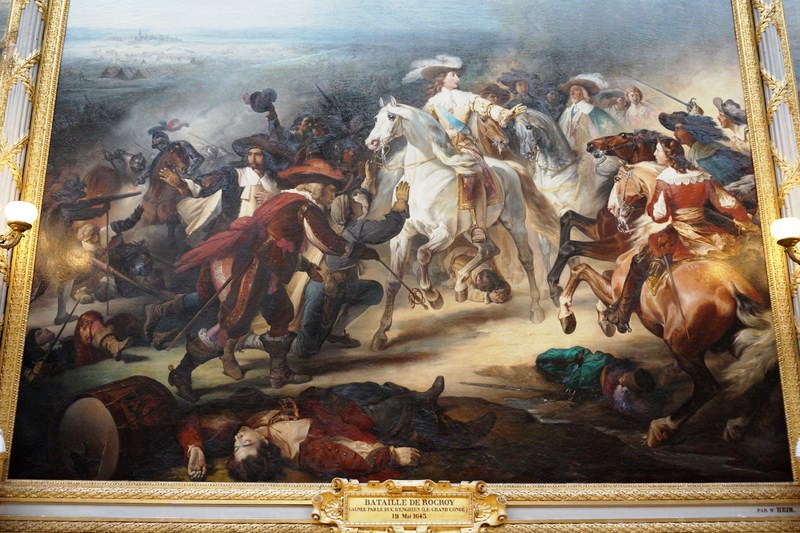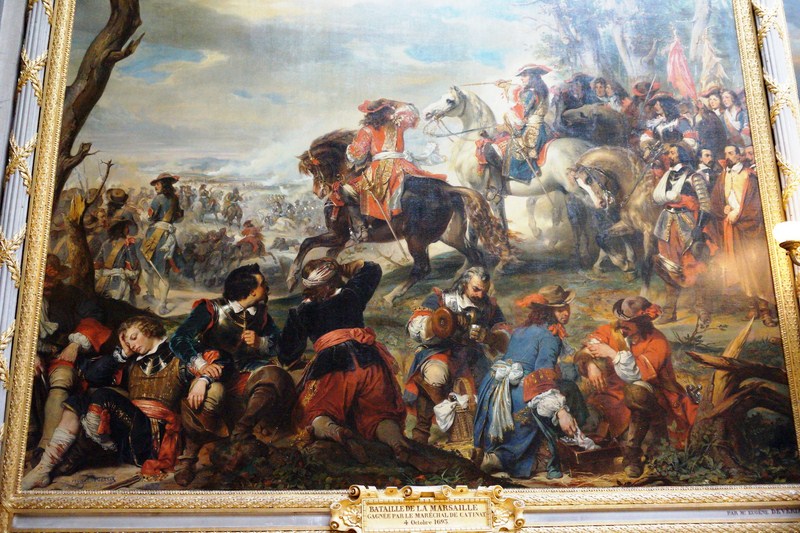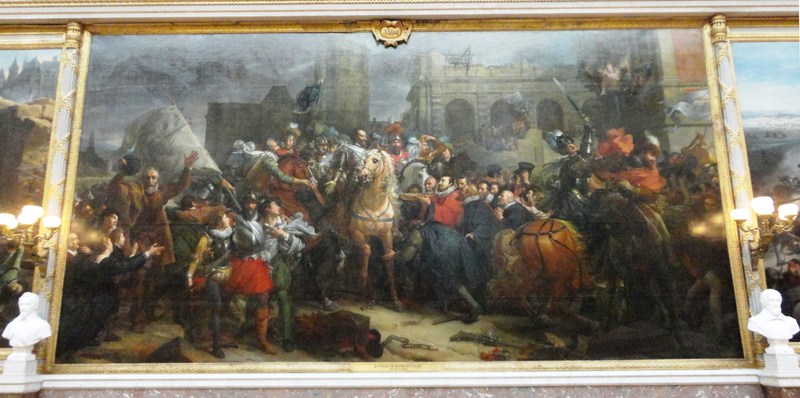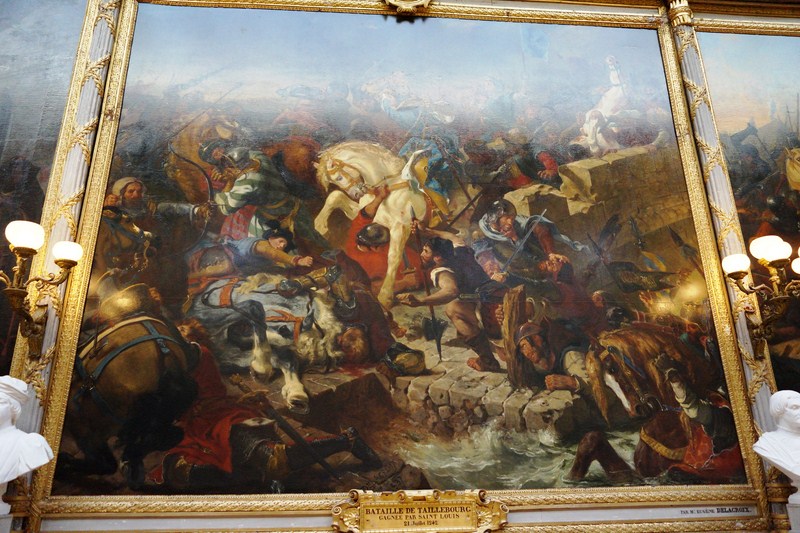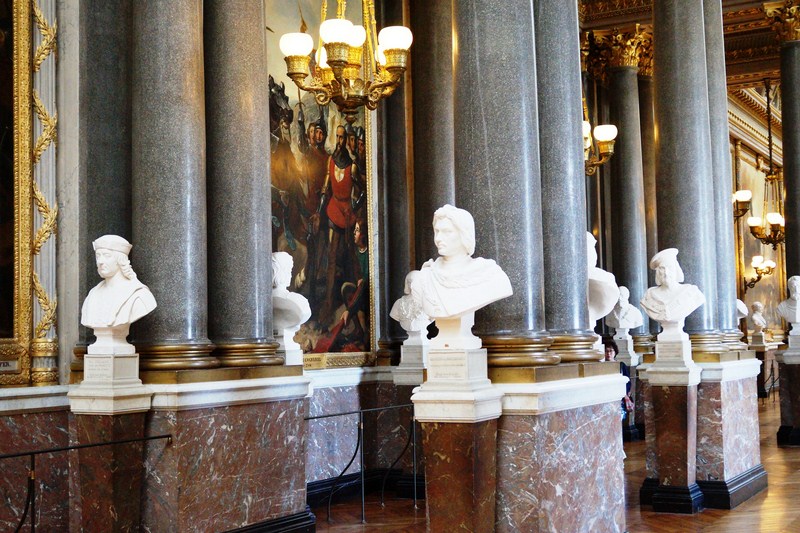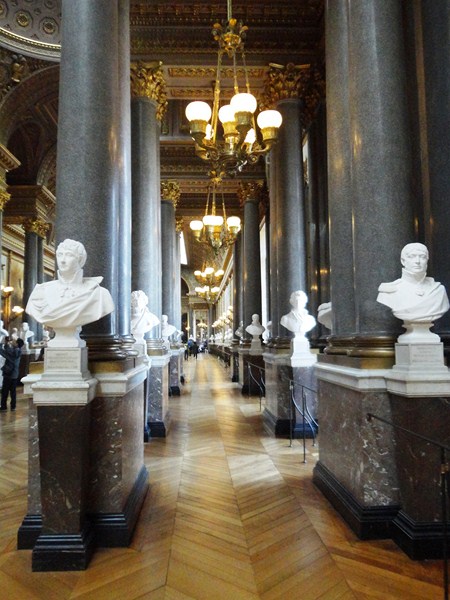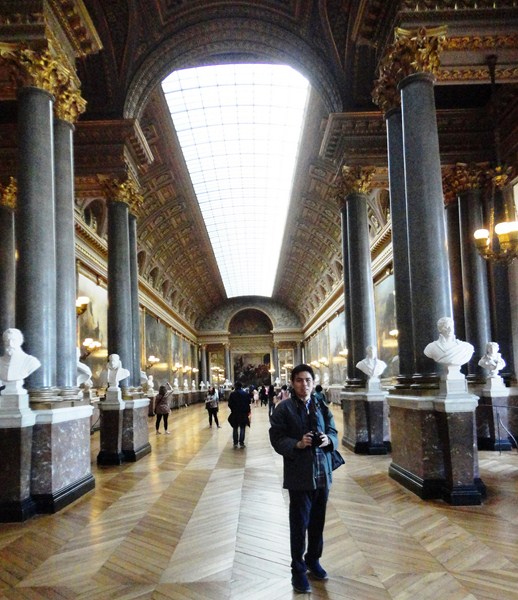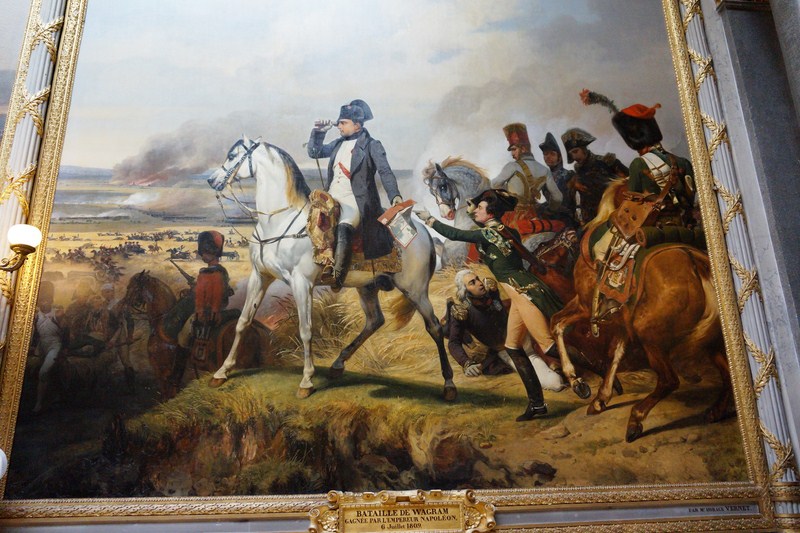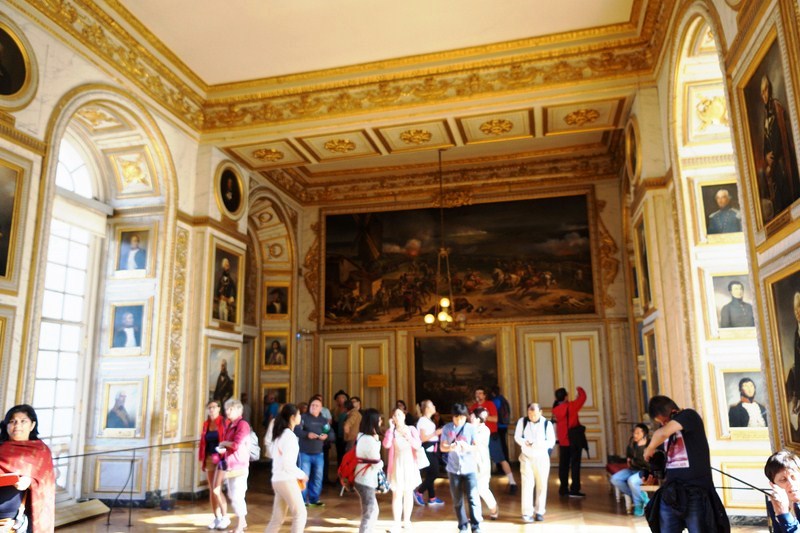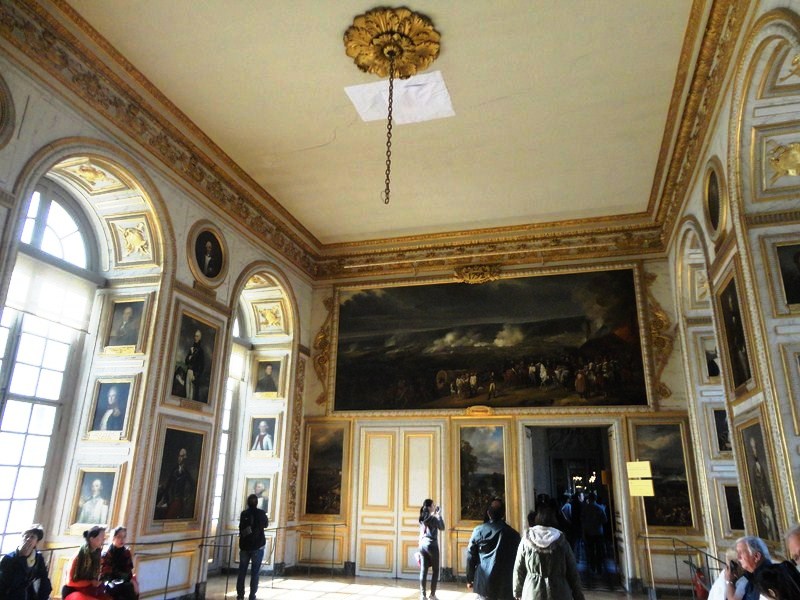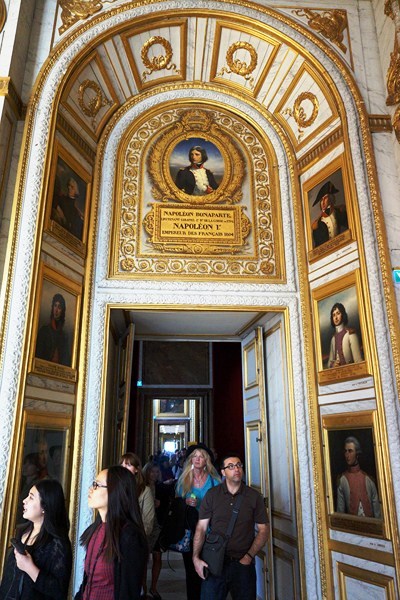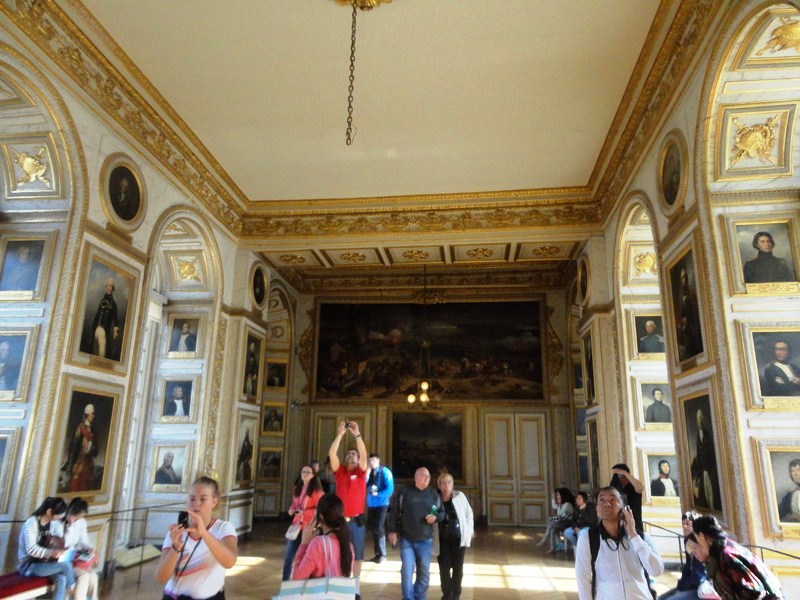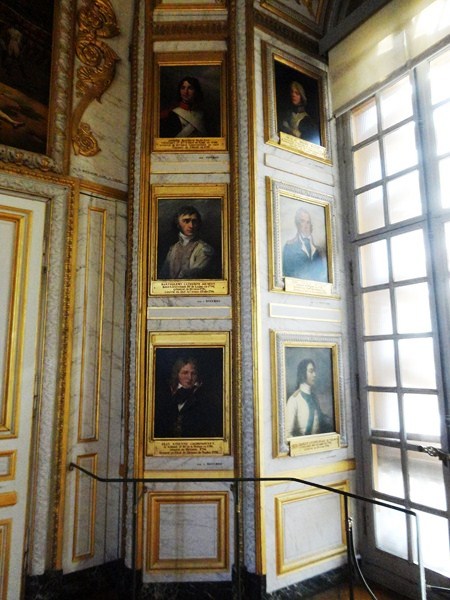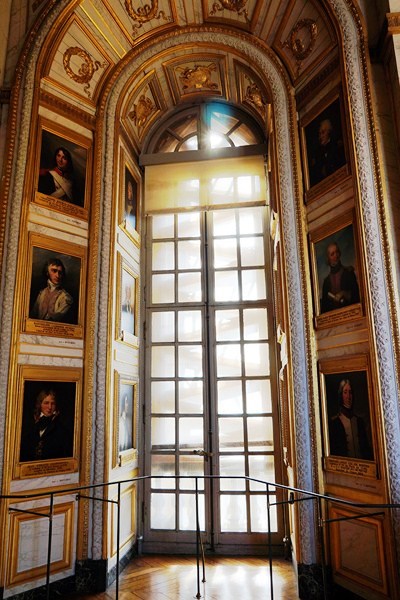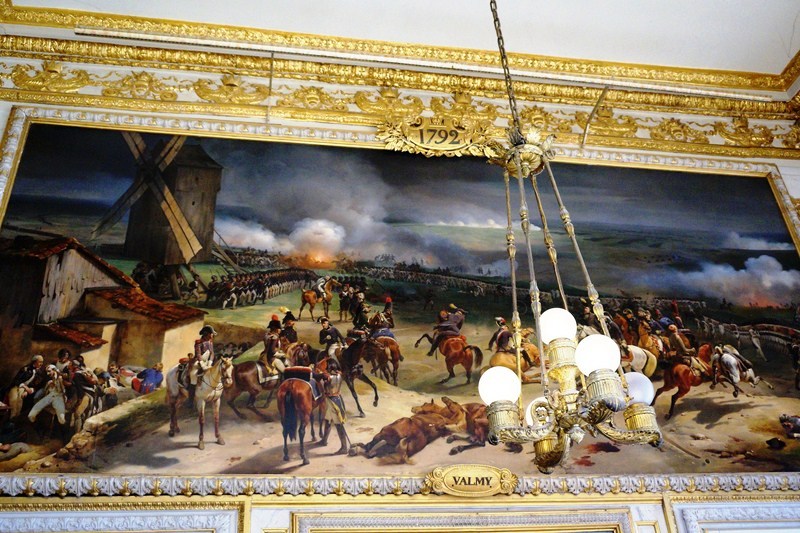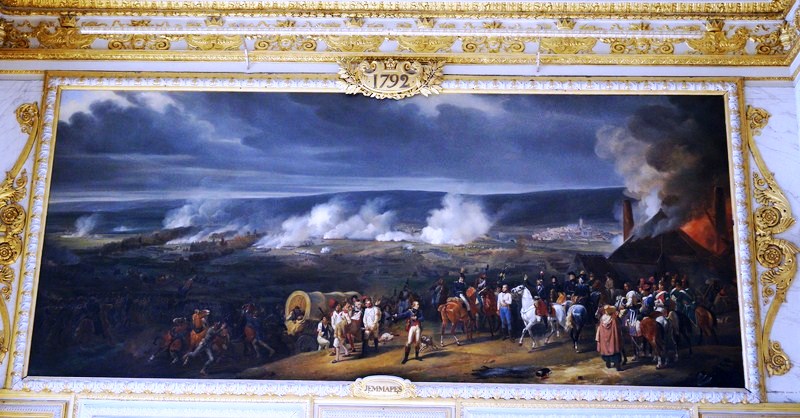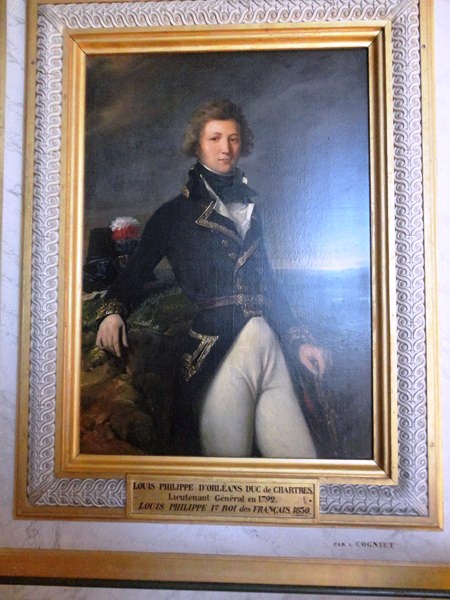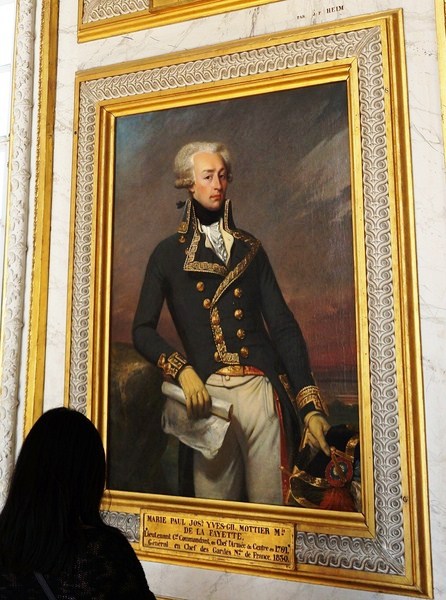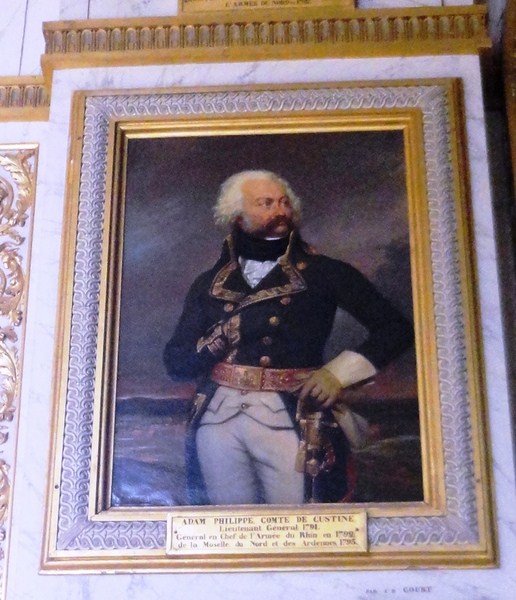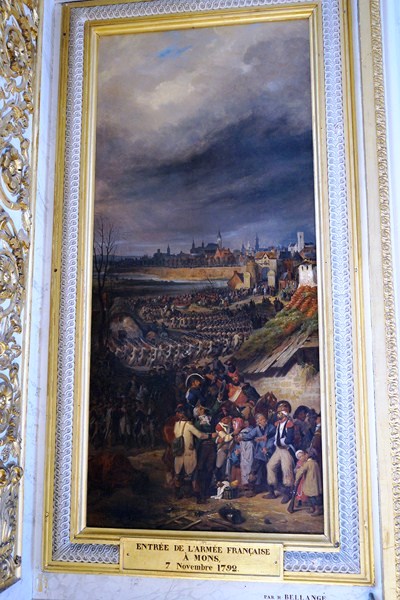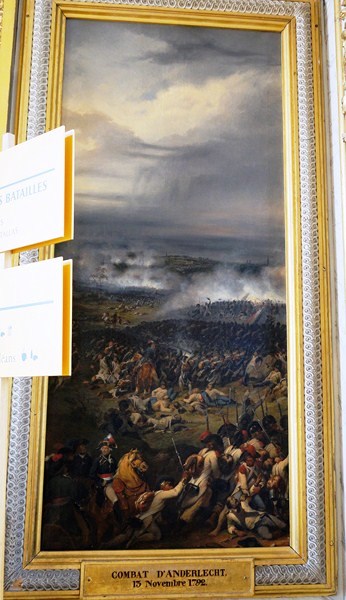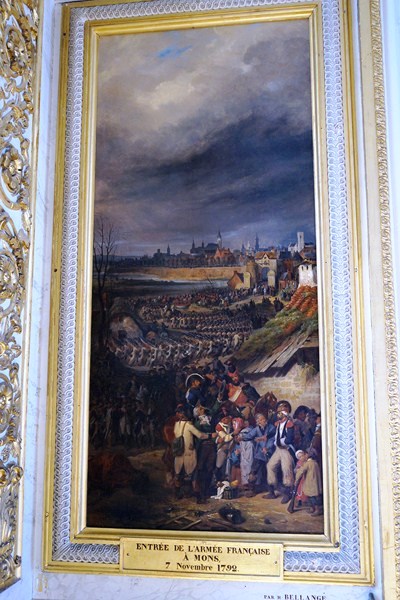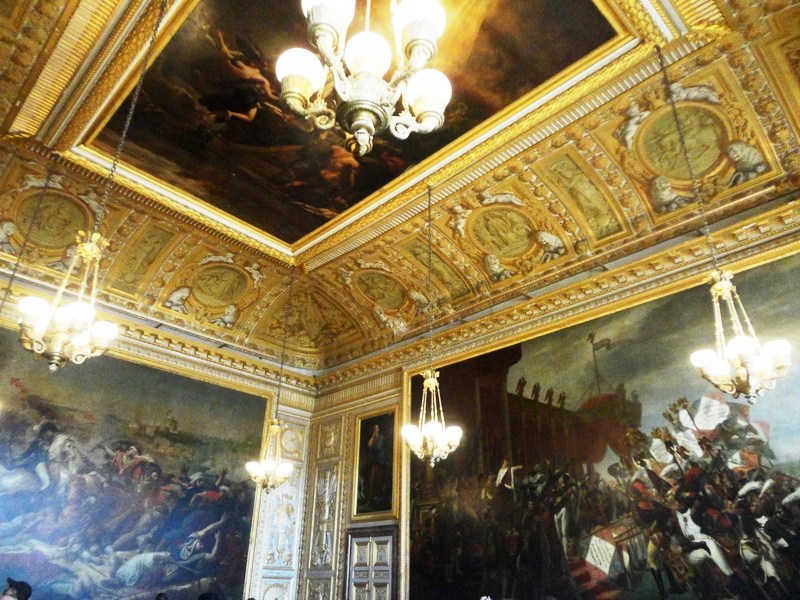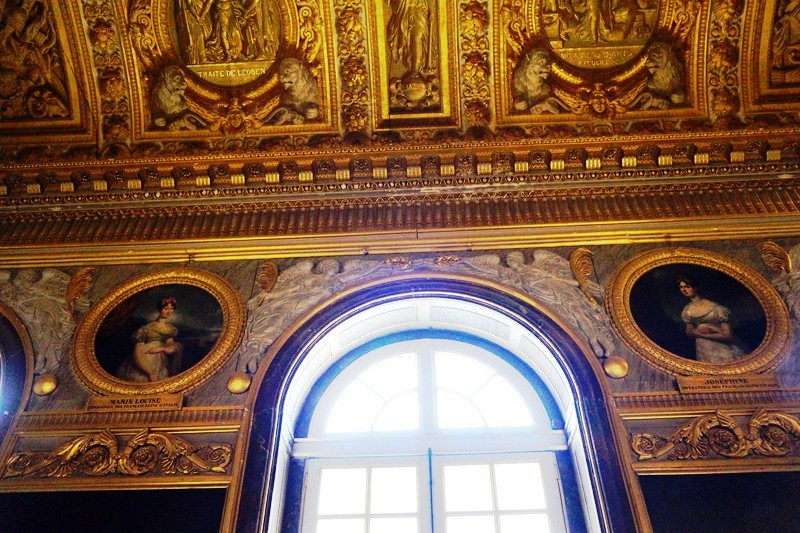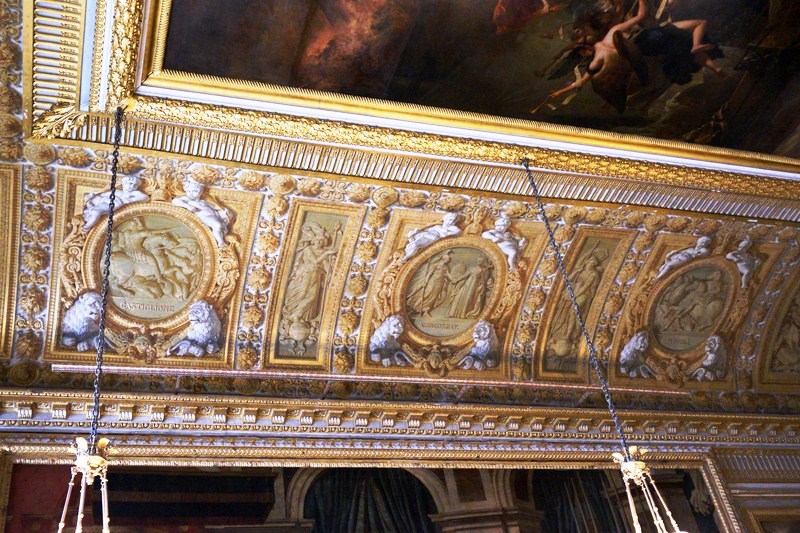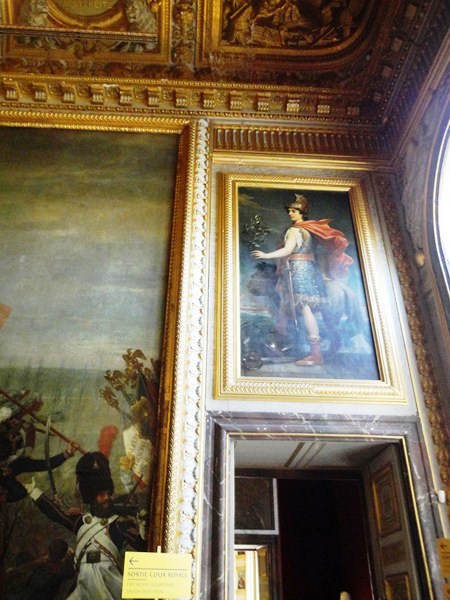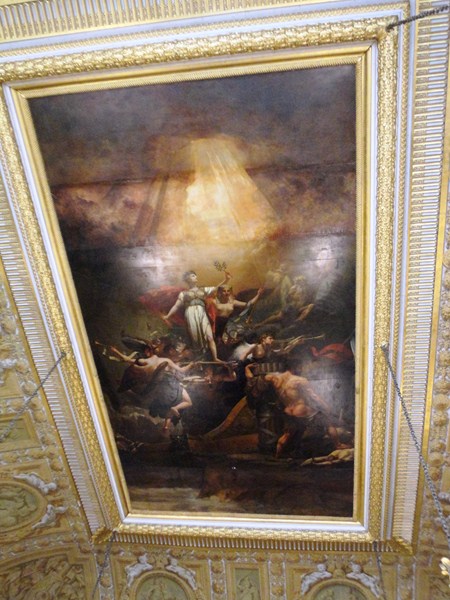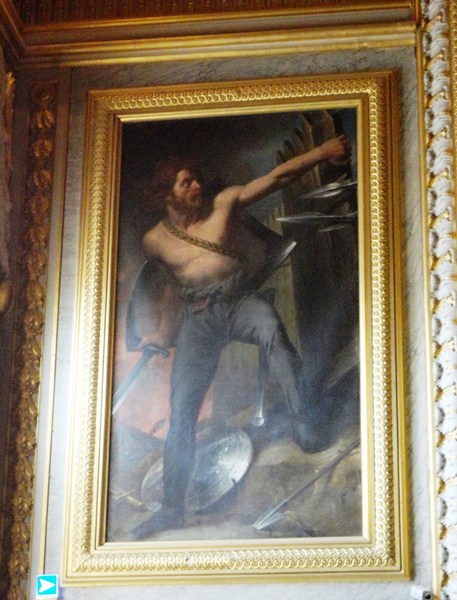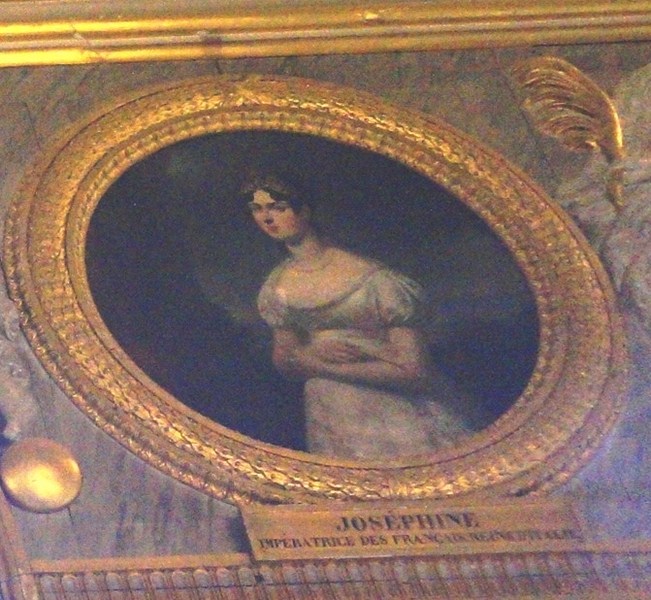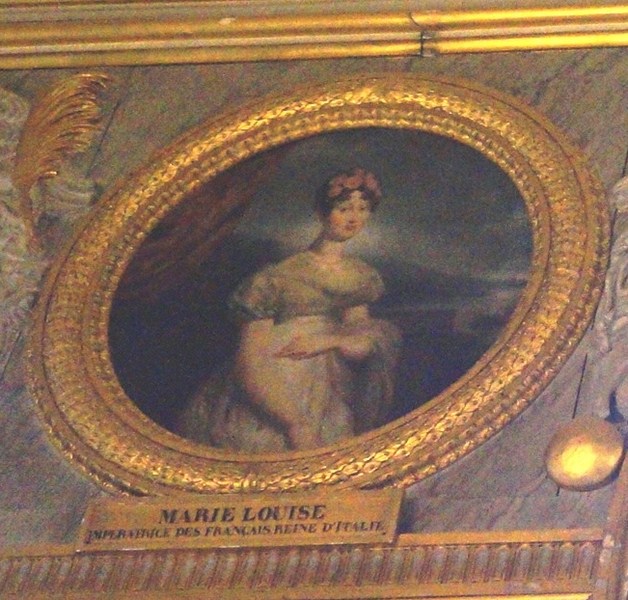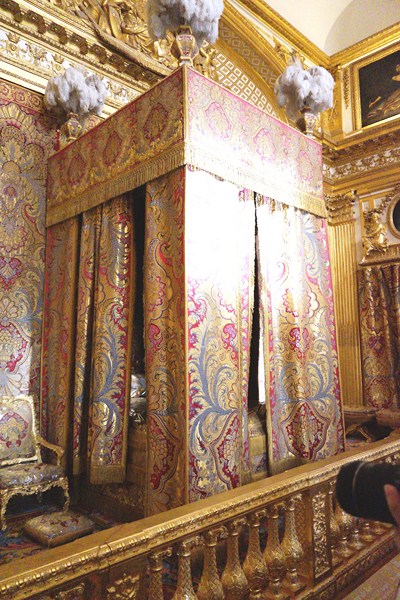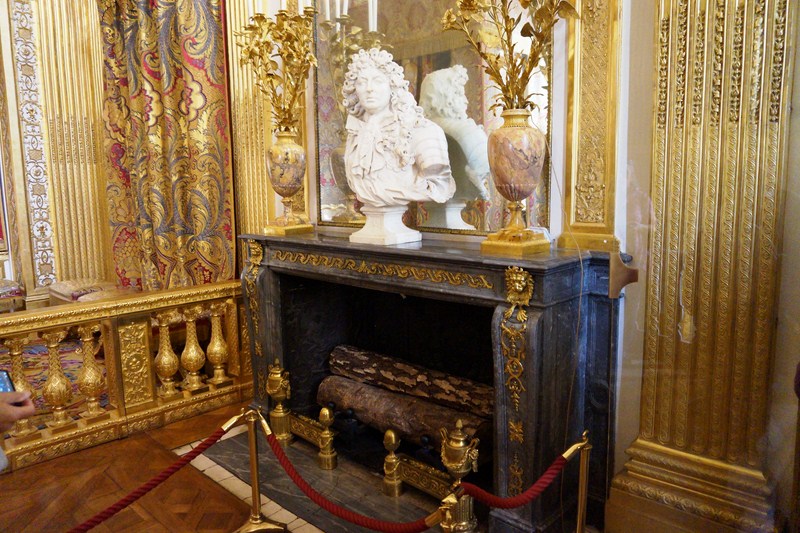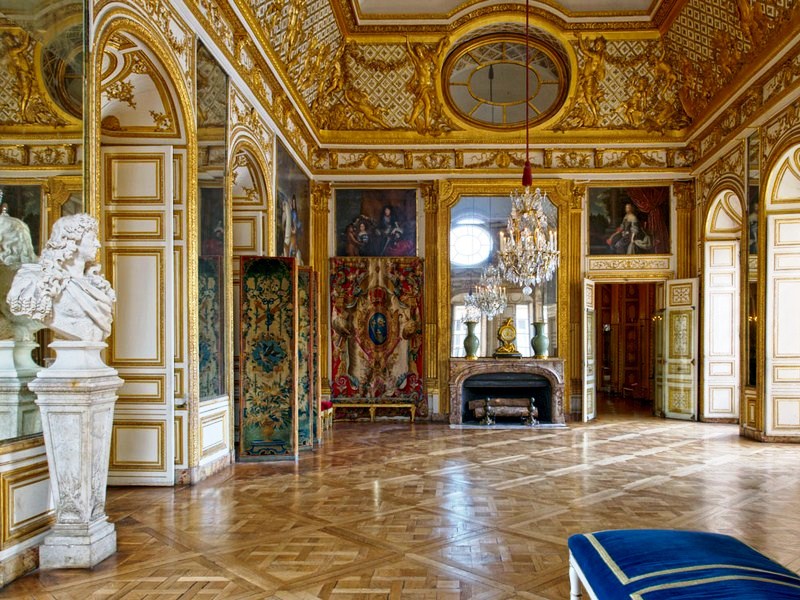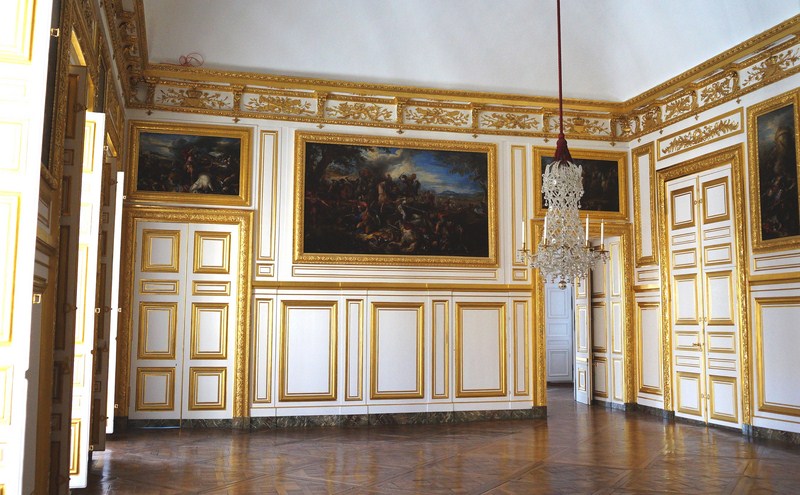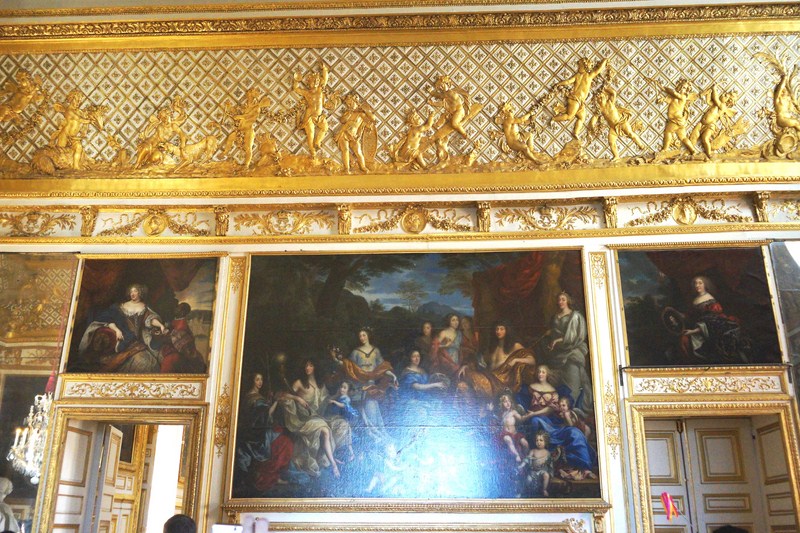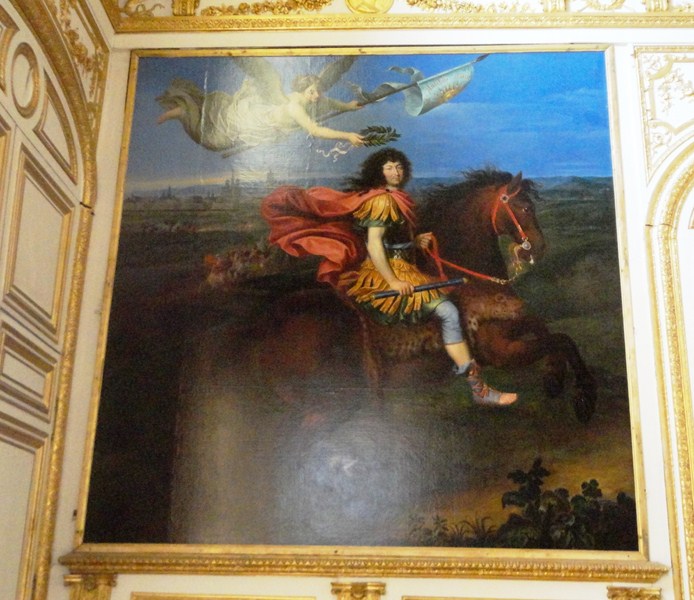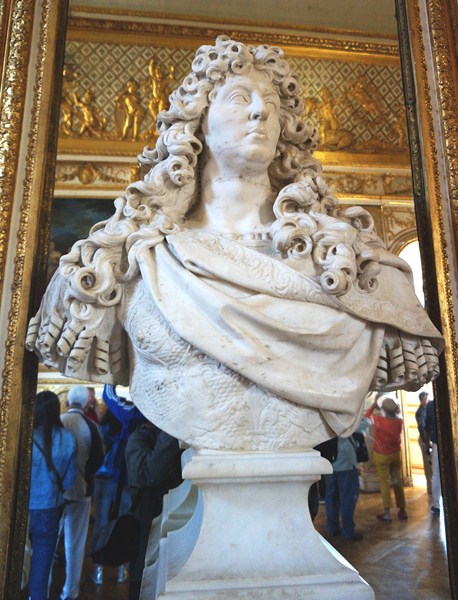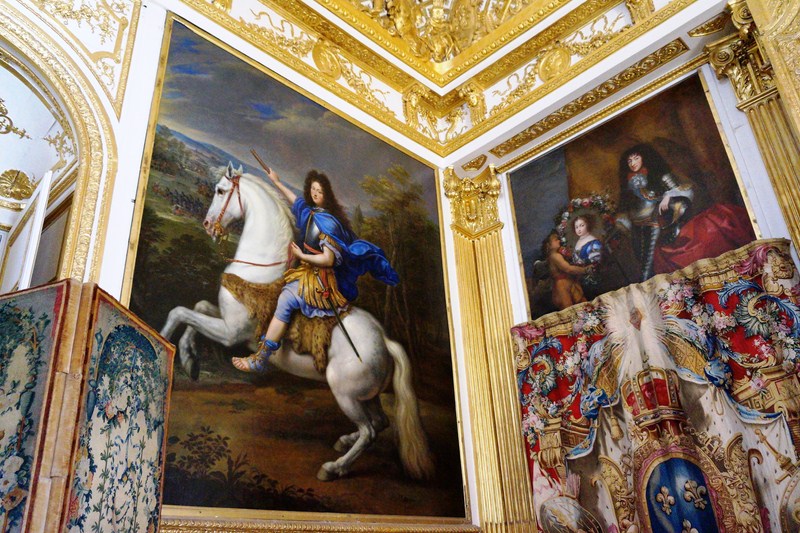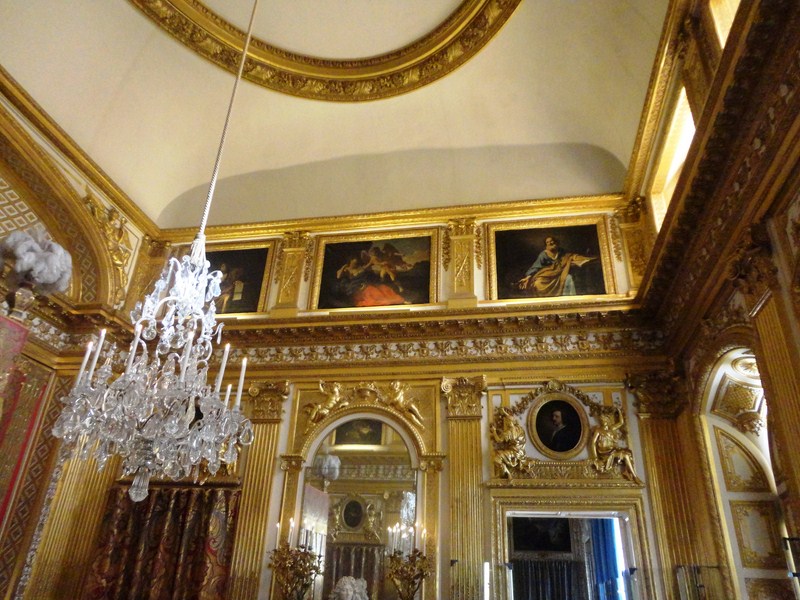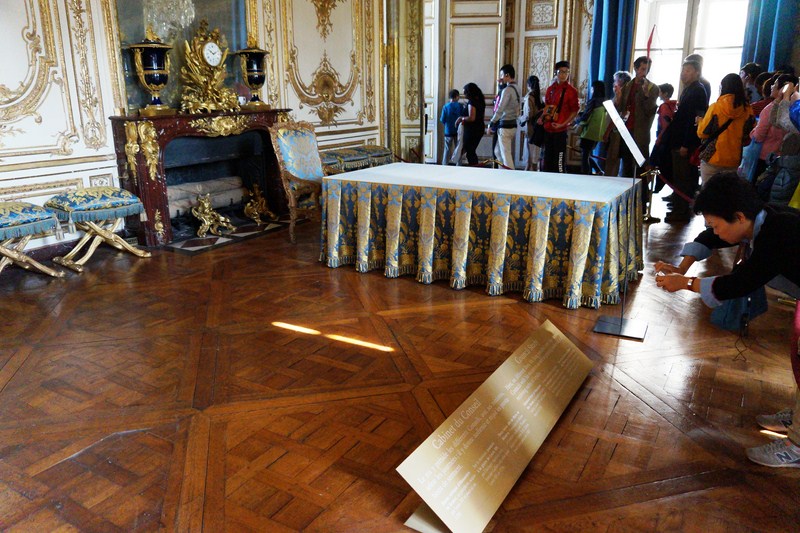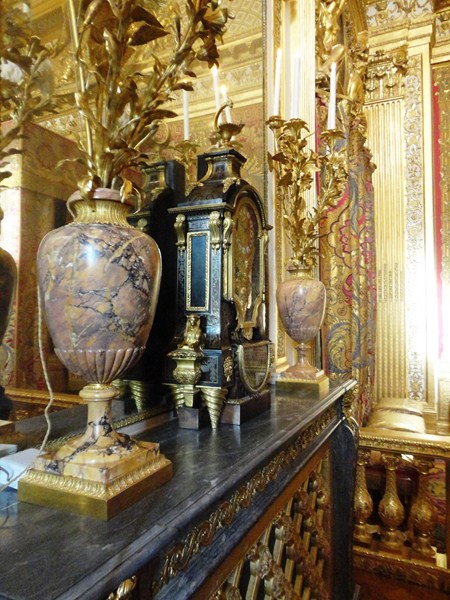The last leg of our “Original Sound of Music Tour,” via Panorama Tours, brought us to Mondsee, a quaint and colorful town of lush countryside, shops and restaurants, where we made our final stopover at the Minor Basilica of St. Michael the Archangel situated right smack in the middle of the town center. We were given an hour to explore the area.

Maria (Julie Andrews) von Trapp walking down the aisle of St. Michael’s Basilica in the film “Sound of Music.”
Do you remember Maria (Julie Andrews) and Captain Georg (Christopher Plummer) von Trapp’s wonderfully famous wedding scene at the “Sound of Music?” This is where the wedding in the film took place (though, in real life, they got married at Nonnberg Abbey where Maria was a postulant). The exterior of the church was never shown in the movie, as it was then under renovation.
The bright and welcoming yellow and white, Late Gothic-style and three-aisled St. Michael’s Basilica, located next door to the monastery building (founded by Bavarian Duke Odilo II in 748, it has been restored and turned into a classy hotel) and courtyards, is the cultural and spiritual heart of the Mondsee region.
The second biggest church in Upper Austria, it is also one of the most prominent and largest monuments in Austria. This former Benedictine abbey church, officially as Pfarrkirche St Michael, was constructed under the direction of Abbot Benedikt Eck and consecrated in 1487.
In 2005, Pope John Paul II upgraded the church to a minor basilica and, that same year, a huge restoration and renovation of the interior began that included every part of the basilica. During one of the many restorations, the framing on the Gothic vaults have been discovered to have been painted in the original light pink color. It took 3 years to complete and, in 2009, the church was reopened and was conferred the title “Austria’s Monument of the Year.”
The basilica has two 52-m. high towers and statues of Saints Peter and Paul on the façade. For architecture buffs like me, it is unassuming on the outside but beautiful inside. We entered the basilica through a small lovely gift shop which helps in the upkeep of the basilica. The beautiful Baroque interior, dating back to the 17th century, features Baroque-style altars collaboratively created by Matthais Wichlhammer and the famous Swiss Baroque sculptor Meinrad Guggenbichler, outstanding pieces of work, with lots of black and gold, that are really stunning and nothing short of extravagant.
The light and airy interior, exactly the same as it was when the movie was filmed, was even more impressive when we looked at the ornate details up close. The ceiling, with soft almost pink snowflake-like designs on a clean white background, was also beautiful.
Seven of these altars were carved by Meinrad Guggenbichler who, from 1680, dedicated much of his life to beautifying the monastery. Its 18 m. high early Baroque high altar. with the relics of Abbot Konrad II, dates from 1626 and was designed by Salzburg sculptor Hans Waldburger.
More altars were then built in the monastery church. These included the Holy Spirit Altar, the Wolfgang Altar, the Corpus Christi Altar, the Poor Souls Altar, the Sebastian Altar and the St. Peter Altar. Later, other altars were added, this time by Franz Anton Koch. These were the John Altar, the Altar Josef, the Anna or Virgin Altar and Antonius Altar. The altar cross was put together by a Mondsee sculptor.
Once up the high altar, we could see the equally beautiful and impressive pipe organ at the opposite end of the basilica. There are also additional artifacts to be viewed at the museum attached to the basilica. The gilded statues and paintings made me wonder where they got the resources for such extravagance.
I am not used to seeing such splendor. One of the most photographed churches all over the world, this cinematically famous basilica is visited by more than 200.000 people each year. Even if you are not a “Sound of Music” movie fan, the elegant and classy St Michael’s Basilica is still worth spending time walking through.
Minor Basilica of St. Michael the Archangel: Kirchgasse 1, Mondsee 5310, Austria. Tel: +43 6232 4166. Open daily, 9 AM – 7 PM. Although entrance to the basilica is free, there is a small admission fee for the museum.
How to Get There: Bus140 from Salzburg runs every 30 minutes and takes approximately 50 minutes (25 kms.) to reach Mondsee.

